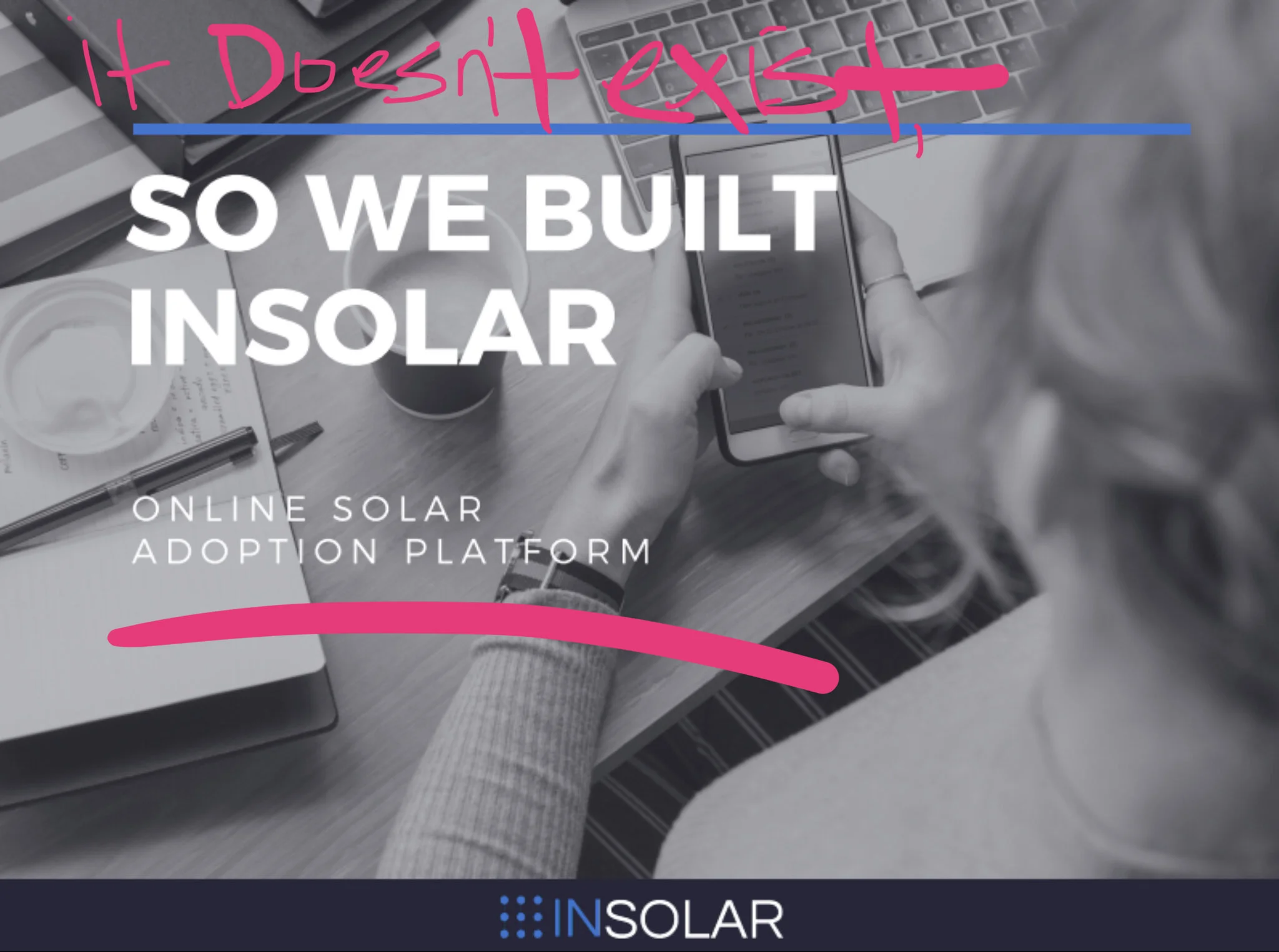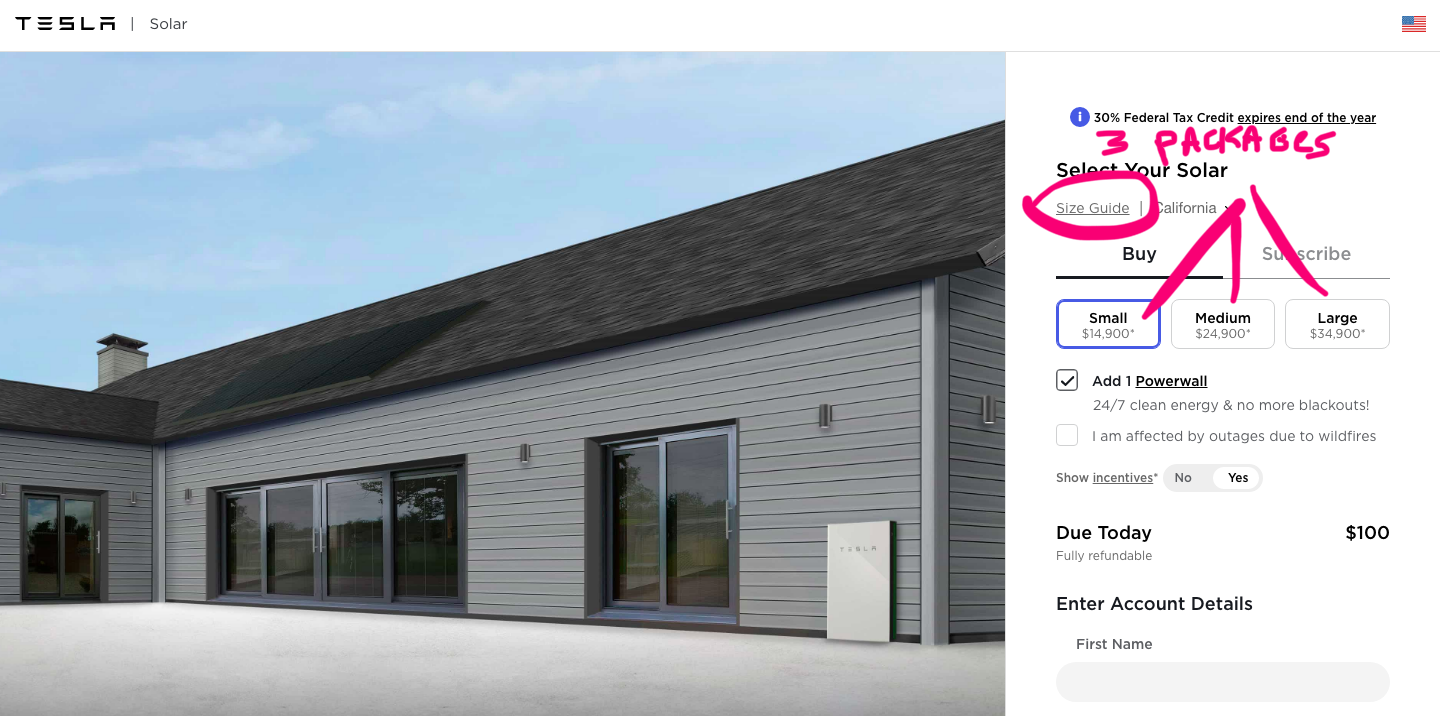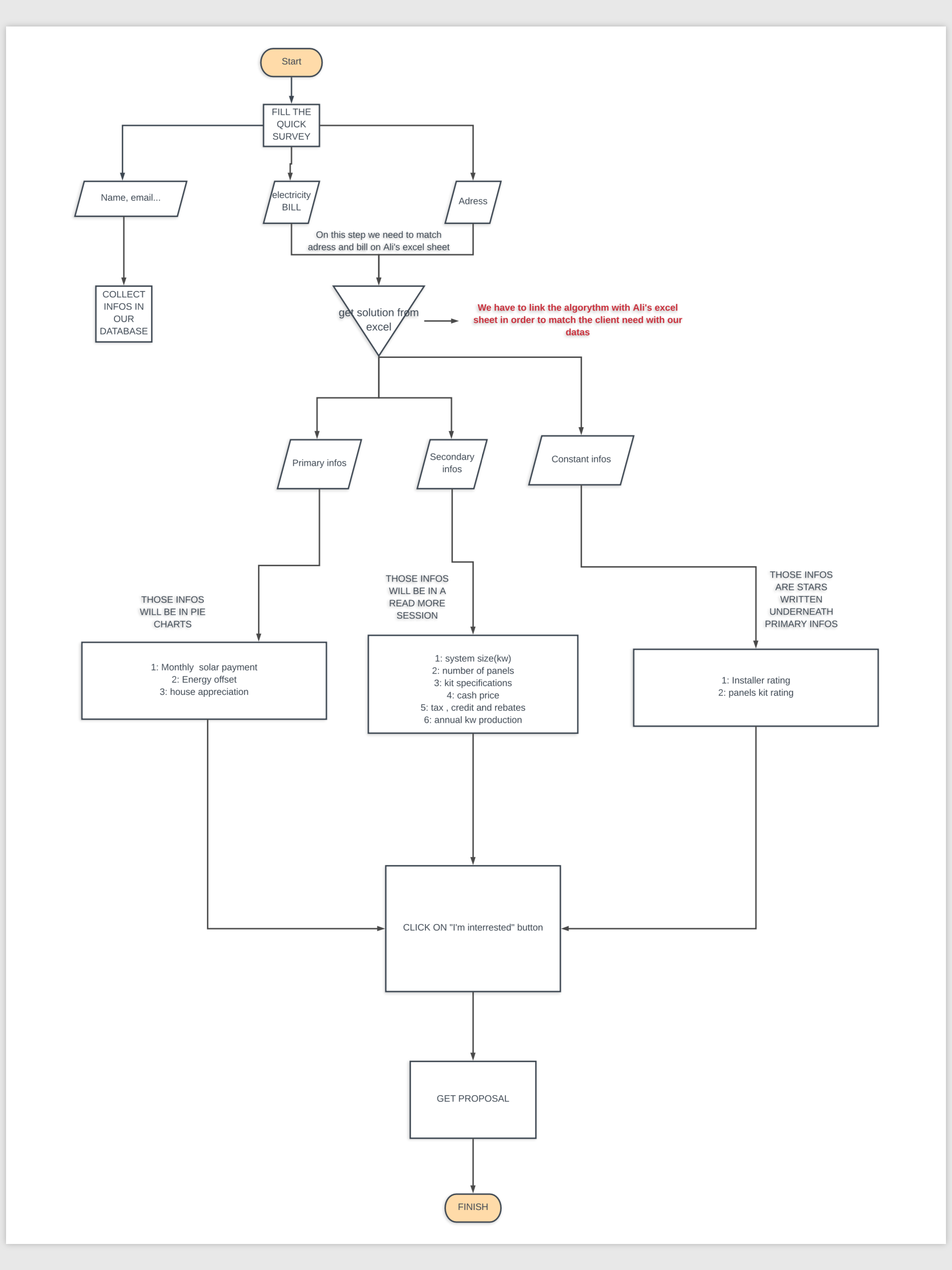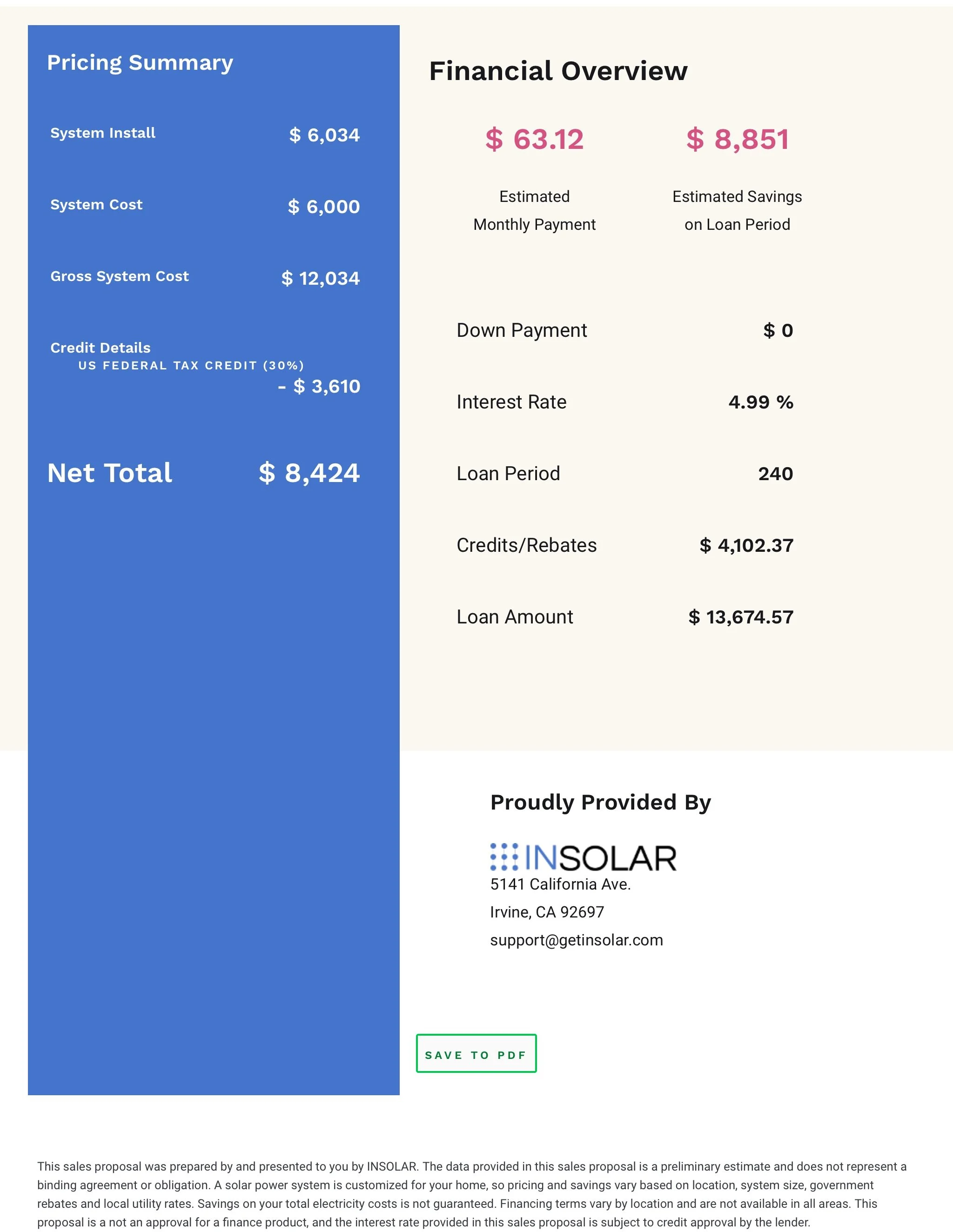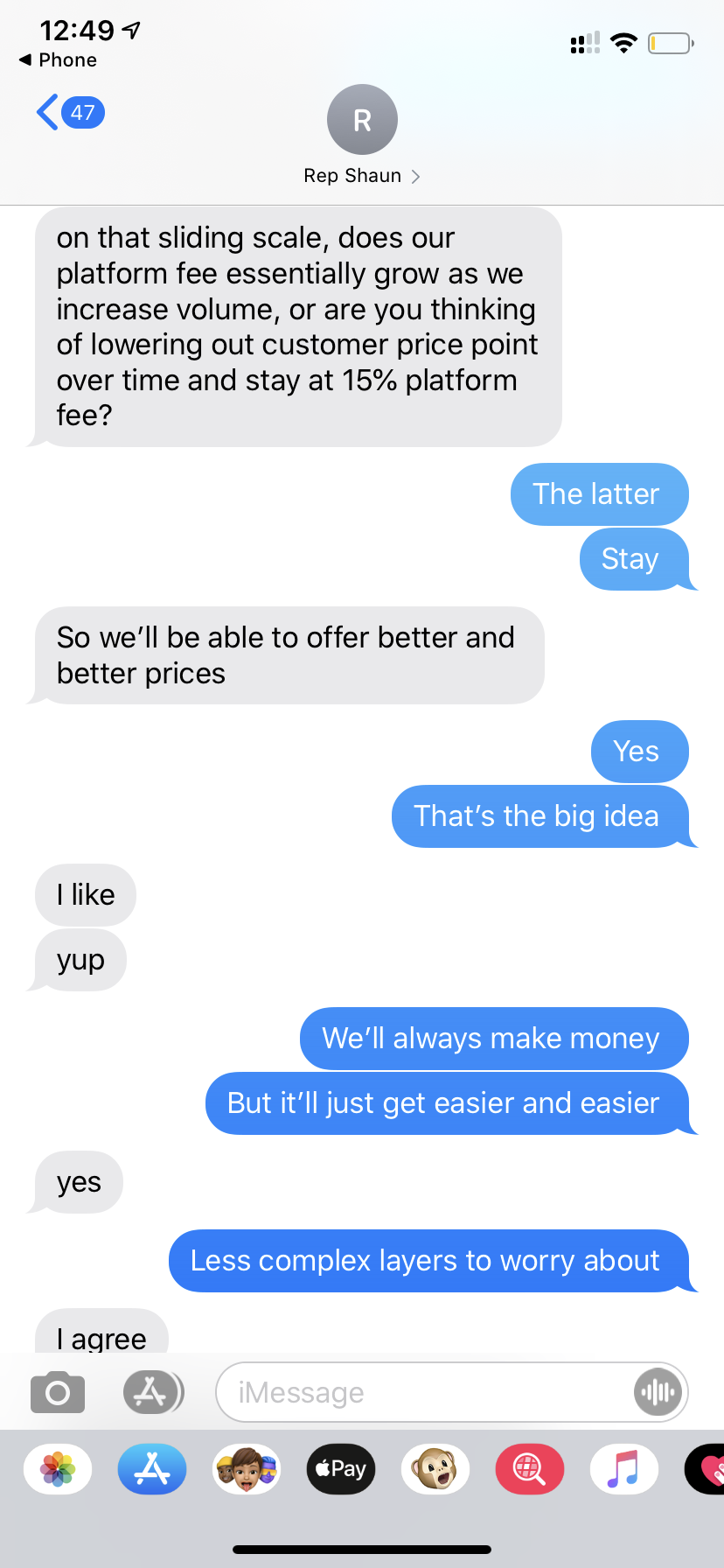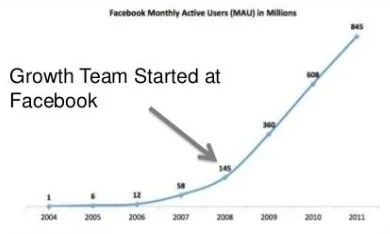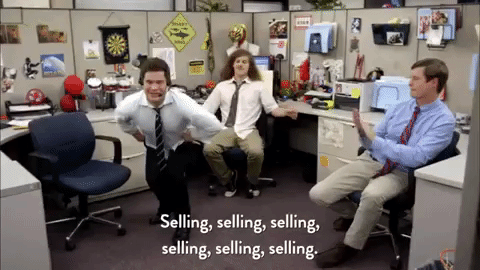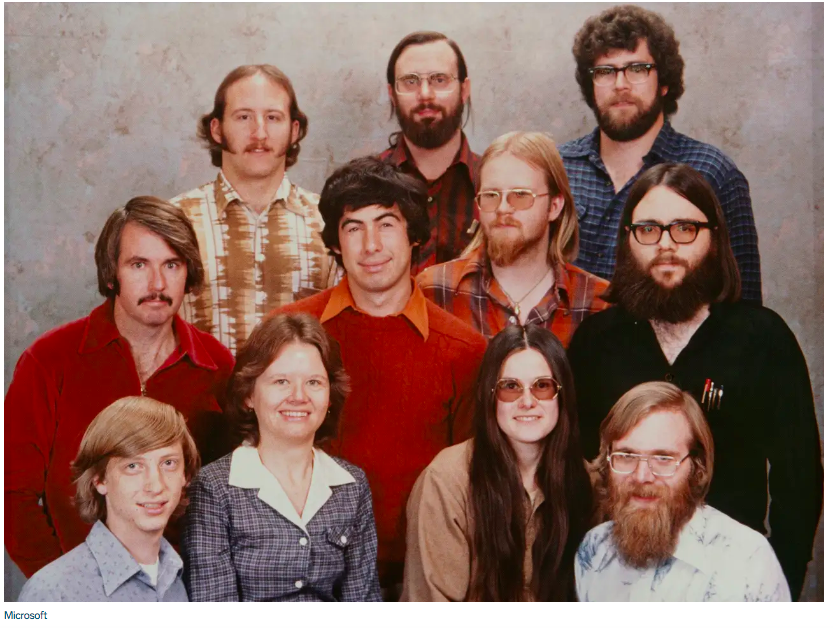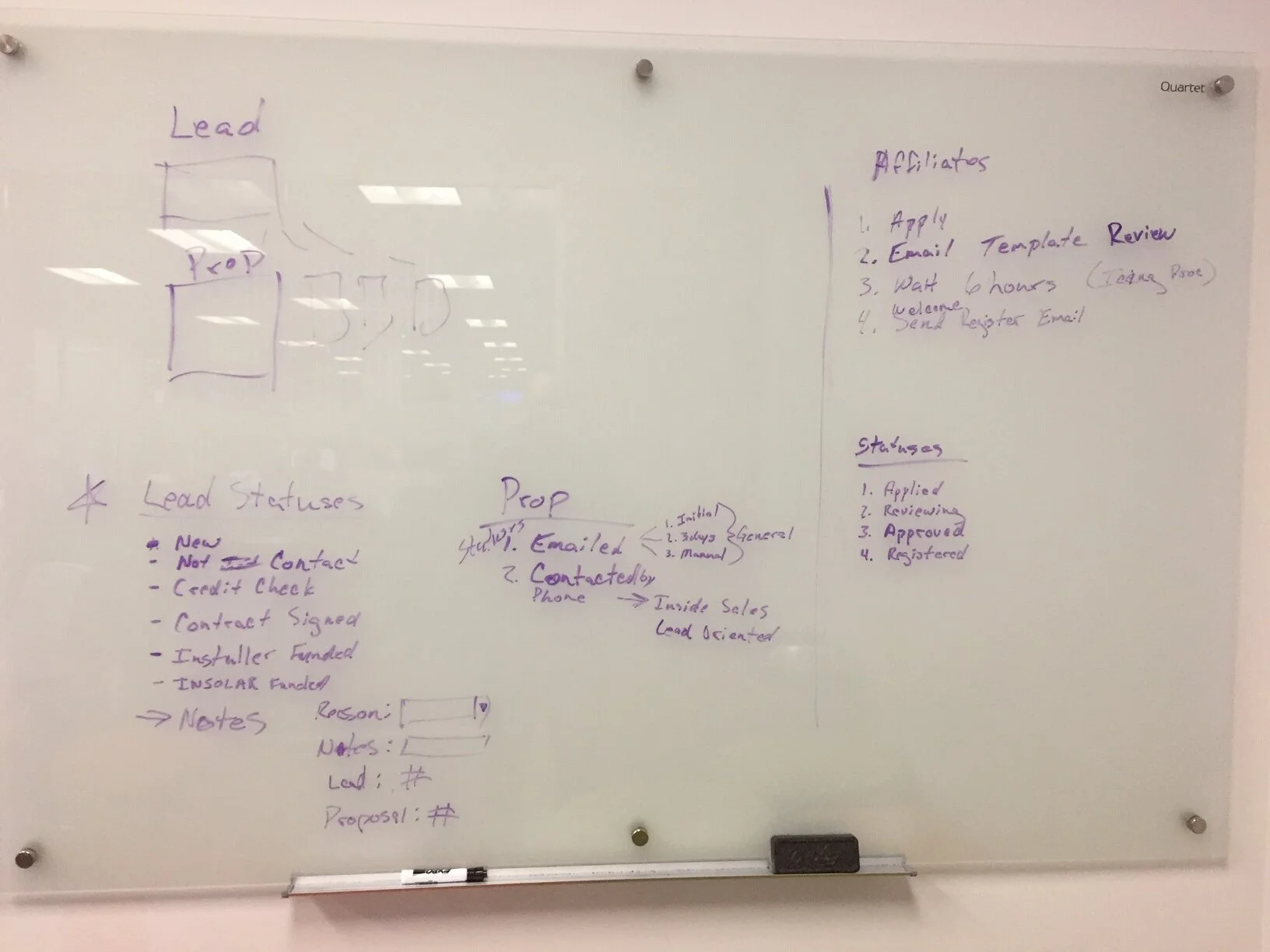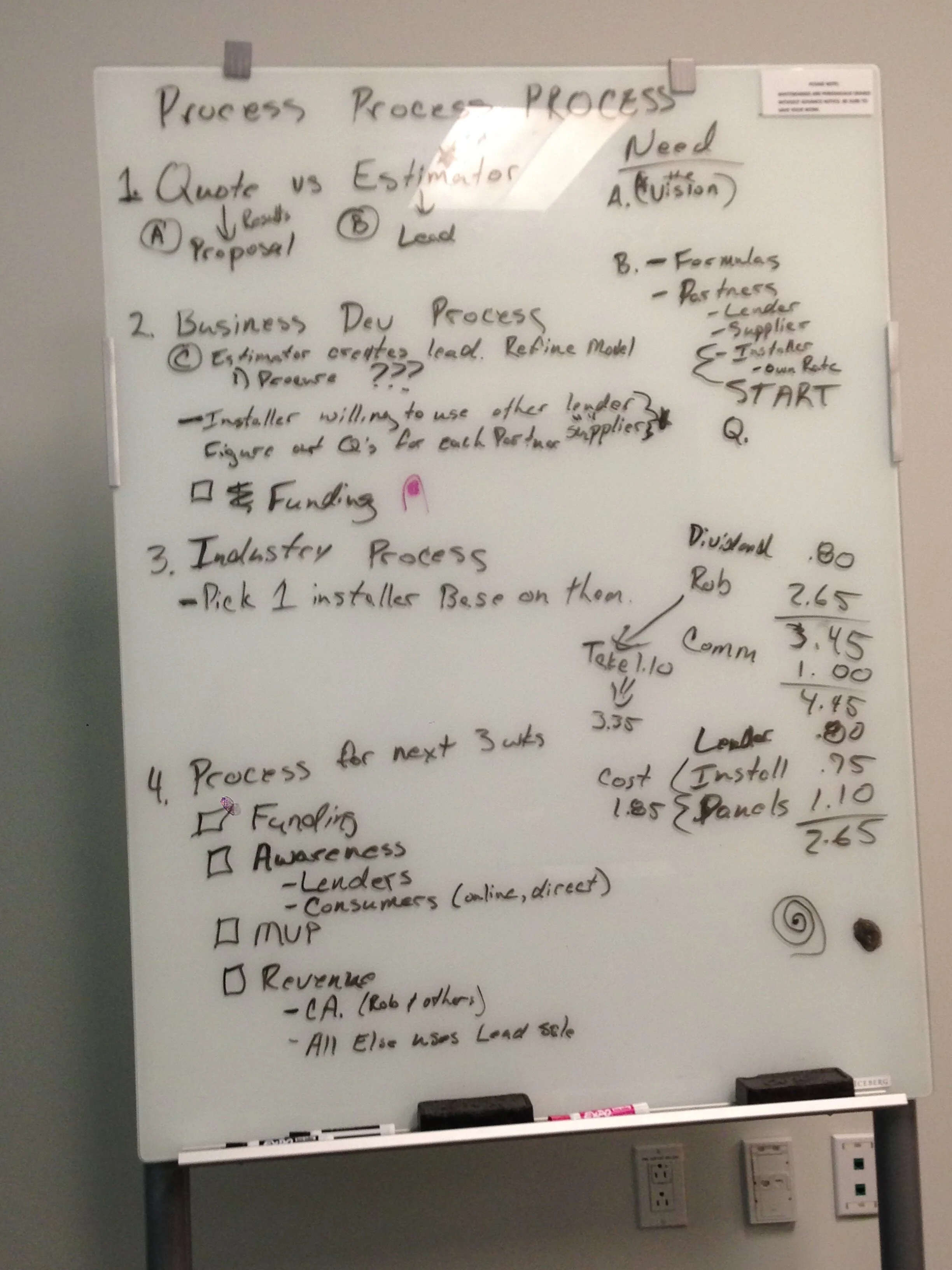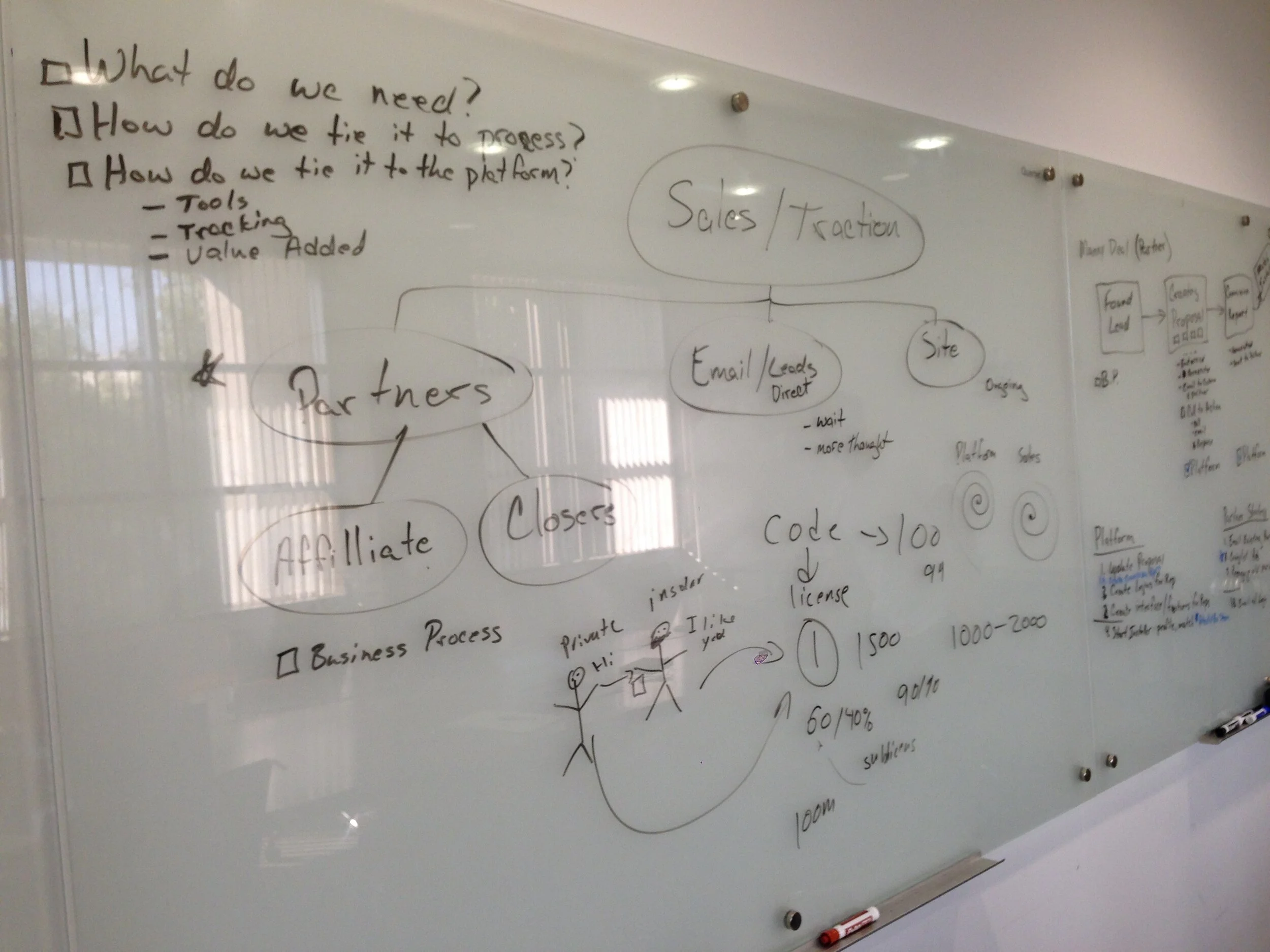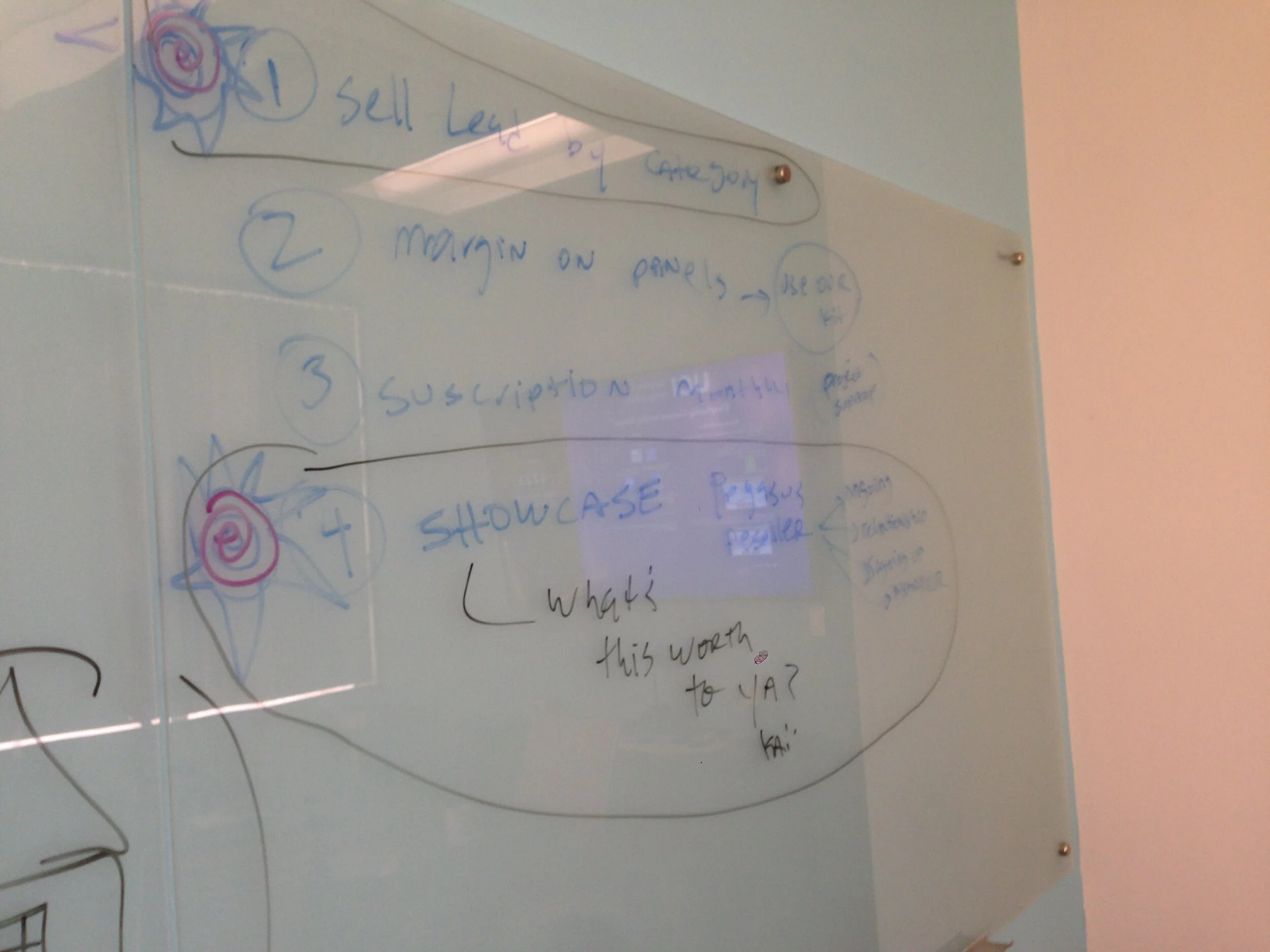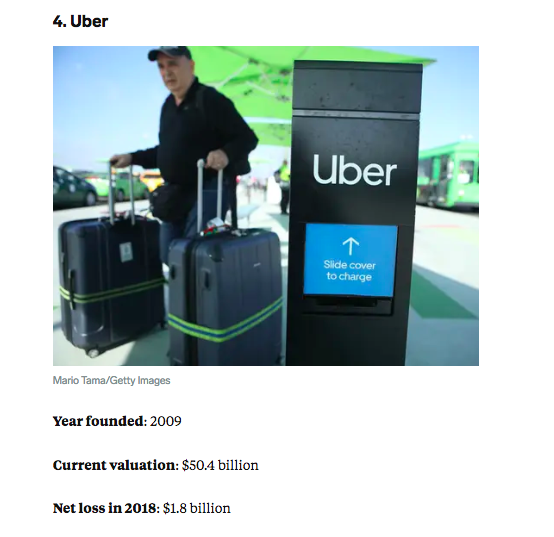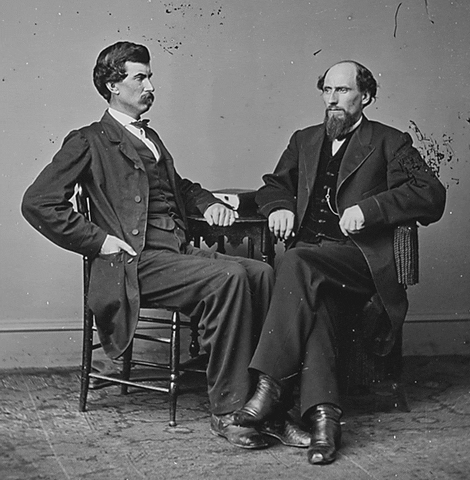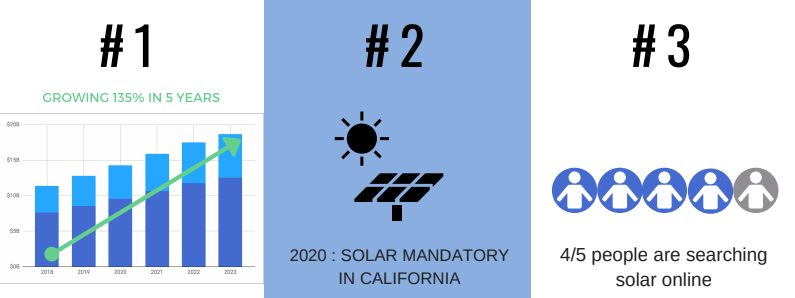STARTUP X
ALI SINA
About the Author: Ali Sina is CEO of Forkaia® and Insolar, creative director of BAM and Founder Fascia and Round Z Ventures. He’s also the author of Startup X, Break the Simulation and BAM: Business Athlete Mode™️.
EXPERIENTIAL LEARNING ACADEMY | LEARN BY DOING
We believe that young entrepreneurs like yourself will unlock human potential and make the world a better place. Startup X is just another tool to help you make that happen. Our goal is to teach you entrepreneurship in less than the time it takes to watch a movie. To optimize the Forkaia experience we’ve embedded the Forkaia Combine into the Academy so you can apply things you learn into immediate action. This way you’re not just learning a bunch of theories - you can actually test them out.
Lectures are organized into short videos, real-time case studies, expert tips, tasks and quizzes to help you absorb the information. You will receive a Forkaia Academy Diploma when you complete the course by passing all your Lecture Quizzes and Final Exam - you can take the tests and quizzes as many times as you want.
And you can go at your own pace.
TABLE OF CONTENTS
INTRO
IDEA
PROBLEM
P.U.F.I
GROWTH
T.H.M.C
O.S.F.I
C.F.O
Disclaimer: The ideas here are NOT ours. Okay some of them are but most are from people much smarter than us. It’s a collection of strategies, principles and practices in entrepreneurship and startups that we feel will be useful to you and your future; lessons learned from Silicon Valley unicorns like Uber, Snapchat, Airbnb, and Dropbox or taught at Y-Combinator by Paul Graham and Sam Altman or uncovered in books or essays written by Peter Thiel, Mark Zuckerberg, Elon Musk, Jeff Bezos, etc… Basically it won’t hurt to know some of this stuff especially if you plan on going out on your own at some point.
LECTURE 1 | INTRO
PASSION COMES FIRST. BUT YOU HAVE TO BE READY.
New technology comes from startups. Big organizations lumber around uselessly, and individuals don’t have the resources to create an entire industry. Small, agile groups foster innovation.
Hollywood, social media, Instagram influencers and eccentric billionaires have elevated entrepreneurship to Rock Star Status. And it definitely has its perks but money is not one of them.
Don't join startups for money. Join for the team, the product, the exposure to unique problems, and the chance to create something from nothing. Use that to make money later.
Ready for more bad news? The average survival rate for a startup is around 10%. 9 out of 10 startups are shuttered before they grow enough to sustain themselves. Almost half of failed startups shut the doors because they didn’t make a product people actually needed. Some failed because they ran out of cash, others because of an ill-equipped team.
At Forkaia, we’ve built a vast ecosystem of talent, tools and resources that we can tap into On Demand to arbitrage these risks and overcome any of the challenges startups face in their journey. We have a safety net for every gap, we eliminate risks and we have each other’s backs. Our One Team philosophy gives our startups an incredible leg up on ‘the competition’
COLLABORATION > COMPETITION
ONE TEAM
Forkaia startups don’t compete with one another; we collaborate and help each other succeed because we’re all vested in the same mission. The Forkaia Accelerator is open to any entrepreneurs with a great idea. But unlike other accelerator programs, it’s already preloaded with plenty of premium talent and startups. And a one of a kind collaborative methodology; at Forkaia we manufacture serendipity so you don’t have to hope your college roommate is a whiz computer scientist who writes the algorithm on your dorm room window for you. Your cofounders don’t even need to be in the same school. Okay that’s it for the Forkaia PSA, let’s get back to the lecture.
Startups are really weird.
If you follow your instincts they will lead you in the wrong direction.
You can’t tell if you can succeed starting a startup.
No one can predict this.
What you need to succeed in a startup is not expertise in startups.
You need expertise in your own users.
And you won’t know what your users want until you build it.
Here’s a simplified blueprint to startup success: Pick your users. Find out who you want to ‘serve’ (best to pick a very small, untouched market). Make something valuable for them and get them to use it. Get feedback and make the changes they’d like to see. Make your users happy and get good reviews. Get more users. Then figure out how to make money from it (you may have to pivot) or hope someone buys you out before you run out of cash. Playing this game, with all these moving parts, can be psychologically challenging, to the point of depression (click pic below to read more about that if you’re concerned).
In a startup there is no boss to trick. You cannot trick people. There are all users. And all users care about is if your product does what they want.
Startups are very time consuming. Here is the daily routine of the entrepreneur: Talk with users, build products, eat, sleep and exercise. You need to be mentally fit.
You also need a remarkable Idea, have enough funding, have a good business model and a team that can execute. But ultimately everything (or at least 50% of it) will come down to timing. Is this the right time for your product or service?
LECTURE 1 TIPS
Only start a startup if you feel compelled about a particular problem and if you think that starting a company is the best way to solve it. Passion comes first.
And how do you know if you are working on real stuff? Real problems are interesting (even if no one cares about them), if you like it just learn it; it will become useful later.
Learn about things that matter
work on problems that interest you and
with people you like and respect.
When a side project is turning into an alarming portion of your life you’ll know you are turning this side project into a startup. Google, Apple, Facebook were all first side projects; not companies.
LECTURE 1 TASKS
Your task for this lecture is to simply take a few minutes to yourself to reflect and try to answer some of these questions.
Do you have a passion? Is there anything that makes you tick? (Hint: you already know if you do)
If yes, What is it? If not, that’s okay, too, try to pursue things that you’re simply curious about.
What things matter to you?
Are there any problems you find interesting?
Who are some people you like and respect?
LECTURE 1 CASE STUDY
Passion comes first. I’m very passionate about reversing climate change not because I think we’re killing our remarkable planet (that will never, ever happen) but because I’m passionate about Humans. We’re the ones at stake. My son and daughter are at stake. This planet will remain long after we’re gone. The new generation is inheriting a planet that has been raped and abused by generations past - I wanted to break that cycle.
Do I think that solar will be the all in all solution? No! But it already exists today and it’s a far better alternative than continuing to suffocate our ozone by burning fossil fuels. I started Insolar because I saw the way solar is being sold today is broken and I came up with a simpler way to get people to do the right thing when they’re finally ready. But before I started had to answer my own questions.
Is there anything that makes you tick? People that tell me No or Can’t. The word Impossible is a bad word in our house, the kids are forbidden from using it. I got a lot of '“you can’t” and I remember every single one of them. What things matter to you? Having the right answer to the question “Dad what do you do for work?” In my opinion Climate Change is the biggest pressing issue humanity is faced with today so I definitely wanted to work on that.
Read full article here
Only start a startup if you feel compelled about a particular problem and if you think that starting a company is the best way to solve it. That describes the Insolar story to a T.
I’m not necessarily in love with the solar business; there’s nothing super exciting about builders or the roofing industry but the combination of my kids and their kids and disrupting greedy humans polluting us for money and proving every single person wrong that said “No” to me is something I’m very passionate about.
LECTURE 1 QUIZ
LECTURE 2 | IDEA
DATA. MISSION. EMOTION
Your idea should be mission-oriented and make people have an opinion. And you should get plenty of data to corroborate your hypothesis before you start anything.
The definition of an idea includes the size and the growth of the market, how the market is going to evolve, the growth strategy for the company, defensibility strategy, exit and so on. Think through all of these and not just the product.
And get as much data as possible. We need to know if we're making the right move entering into these markets and building these products. Data is the oil that runs the Forkaia Machine. We rely on new, real-time data to make decisions in essentially every aspect of our businesses and use it to seize business opportunities fast and get to market quickly.
We use our Data Analysts to help make business decisions.
LECTURE 2 TASKS
We need intelligence on the Market, the Players and the Technical Feasibility of the idea. To lead off, the Data Team needs to gather data, analyze, draw insight and offer answers to the questions below.
What’s the existing Market look like? How’s it going to evolve? How big will it be in 10 years?
Size (past-present-future)
Growth (past-present-future)
Who are the Players (What types of similar products exist)
Who’s been Successful?
What are their shortcomings?
How can we improve on their concept?
What challenges do they face?
What’s their business models?
What’s their growth strategies?
What’s their customer acquisition strategy?
And is the idea doable? What resources do we need to make it happen?
Databases
Outside APIs
Specialized talent (e.g., Machine Learning, NLP expert, etc)
Answering these questions will save the organization a lot of time, money, and effort and may also determine what kind of startup you may ultimately end up running.
THE SIX TYPES OF STARTUPS
LECTURE 2 TIPS
Tying a mission to your startup will help you stay focused. When people buy into your mission they want to help you and be involved and your life becomes a lot easier. Great missions are very easy to explain and very easy to understand. If it takes more than a sentence to explain what you are doing it's almost always a sign that is too complicated.
Your idea must be REMARKABLE - worth making a remark about. Even if it’s polarizing; creating something people either love, or hate has been very successful in many aspects in life, we can see its effectiveness in today’s American Political atmosphere. You need to make people have an opinion.
IMAGE SOURCE: TESLA
If people think the idea sucks, that's not necessarily a bad thing, just remember Mark Twain’s quote, ``Whenever you find yourself on the side of the majority it’s time to pause and reflect.”
Get the Data. Have a Mission. Evoke Emotion and Think Differently. That’s your big competitive advantage.
LECTURE 2 CASE STUDY
Insolar is 3-for-3 in the Idea category.
DATA: Good Market, it’s growing. Product doesn’t exist
MISSION: Promote Sustainable Energy for a Cleaner Planet
EMOTION: “You’re going to sell solar online? That’s impossible!”
Here’s the breakdown.
DATA
“Every battle is won before it’s ever fought.”
―Sun Tzu (Art of War)
We spend a significant amount of time researching the arena we want to play in and planning on how we’re going to spend our time and resources.
IDEA
Uber of Solar nobody is doing it online.
MARKET
Good Size
Great growth Rate
Not going anywhere (at least our model I don’t know if Tesla is still door knocking)
Totally uncapitalized
In our research we discovered that the total installed U.S. PV capacity is expected to more than double over the next five years (135%).
But we also found out that solar prices have plummeted 70% since 2010 but customer acquisition costs have increased as Sales and Marketing account for 67% of the total cost of a solar installation. This signified a big opportunity for us (Thank you Insolar Data Team)
Ultimately this is the graph we were looking at.
PLAYERS
Competitors all have shortcomings: PickMySolar, Energysage and Solar Reviews are the closest competition we have, their business models are antiquated they sell user data as a ‘lead’ to solar providers.
We even dig up info on the owners of those companies; how much they’ve invested of their own money, how much they raised, how many years they’ve been at it, what they studied where they went to school even how much of a social media influence they have. Like I said; we like to do our homework. Like seriously, we spend 80% of our time preparing to play and we only play when we know we have a great shot at winning. You have to get kind of obsessed if you’re gonna have any chance.
Notes are from 2018
The more work you put into this phase, gathering data and insight, the better your chances because gaps in intelligence will be debilitating in the later phases when things get much faster. You have to make sure nothing slows you down; information should be retried at your disposal so you can answer any questions you need in real time.
MISSION
We wanted to make transitioning away from dirty fossil fuels as simple and affordable as possible so if someone is thinking about it then it should be as easy as pushing a button because at our current trajectory, not going green will no longer be an option.
EMOTION
Is Insolar a remarkable idea - worth making a remark about? Yes everyone either said that’s a great idea or that’s impossible to do; either way they had an opinion especially the people that have been in the solar industry the longest said there’s no way you can sell solar online there are just too many things you need to consider like the weather, temperature, angle of the roof, shape of the roof, type of the roof, quality of the roof, shading, type of house, time of year, panel efficiency, main panel power, the lender, interest rate, ate rebates, local rebate, racking, the nuts and bolts, and on and on. But that was all just white noise for us because we know what we’re doing. It’ already been done before in other industries and they heard the same thing. There’s always going to be naysayers; it’s fine. It’s part of the balance of life.
LECTURE 2 QUIZ
LECTURE 3 | PROBLEM
WHO. WHAT. WHERE. WHEN. WHY?
Answering another layer of questions will help you narrow down your focus. This is your last chance to prove your hypothesis wrong before the ball really starts rolling; you have to be intensely realistic in this phase. The more real you are with yourself the more headache, time and money you’ll save in the future.
Is there a real problem?
You’ve found something you’re passionate about, you have an idea (and enough time to work on it). That’s great; now we have to find something broken to give you agility to enter the market. The next thing you have to do is think about what is the actual problem. Describe it in one sentence.
What inspired this? Is it a personal problem?
Answering the ‘WHY’ is the most important from all of these. Ask yourself how this problem relates to me? Why am I so passionate about it?
TIP: It’s better if the problem you are solving is a problem that affects you as well. Otherwise you’ll have a disadvantage in getting close to your customers.
Who else considers this a problem?
You must also verify that this is a problem that other people have too.
TIP: You learn this just by going out and talking to people. One of the biggest mistakes entrepreneurs make is not thinking if this is something they really want to do before building.
Where is this problem happening in the world?
Define the problem you want to solve starting with a small subset of the problem. That means when picking a market, avoid the temptation to go big!
TIP: Try to pick a small but rapidly growing market with little or no competition (think hobbyists). This strategy has the following advantages.
1) You won’t get swallowed up by bigger competitors
2) Your customers will put up with an imperfect product (so long it keeps improving) due to lack of alternative products. In a big market with many competitors there’s very little margin for error.
Dominate small first and grow from there!
Why Now?
And remember your timing is critical. You have to ask yourself why now is the best time to think about this idea and start this company? Why not two years ago? And why two years in the future would be too late?
How do you start?
So you are now able to state a problem. What do you do next?
TIP: Learn a lot about the industry: Become an expert so people trust you when building this product.
And
TIP: Identify customer segments: talk to your targeted users and focus on their needs.
LECTURE 3 TASKS
Watch Simon Sinek’s Ted talk on why the Why is so imperative in your mission.
LECTURE 3 CASE STUDY
Insolar is 5-for-5 in the Problem Category.
1) WHAT
What is the problem, describe it in one sentence: Going solar in America is confusing, time-consuming and expensive because there’s no online solution.
2) WHY
The Solar game can be expensive. And a cash flow nightmare. You lay out of ton of capital upfront to pay for marketing and customer acquisition, the sales teams, installation crews, admin team that takes care of rebates and utility paperwork. You have to buy panels, inverters, trucks, cars, place ads, get licensed, bonded, etc, …The list goes on and on. There are many moving parts; it’s like running 5 business at the same time.
The “Biggest” Solar companies were (and still are) bleeding cash. I saw the Insolar platform as an absolute no-brainer.
3) WHO
Nearly every single person we talked to said shopping for solar was a pain in the butt. The user experience was dreadful; lengthy, pushy, and sloppy with zero transparency.
We didn’t just take their word for it. We secret-shopped 5 different solar companies and were shocked at the range in prices we got. That was over 2 years ago. Not much has changed in this business because we just had one our clients do the same, here are the results. Look at the range if pricing for the same stuff; even the way the proposals were delivered is somewhat mind blowing. See the real proposals here
4) WHERE
Although this problem is happening all over the US, we selected to focus on serving California first because of California’s new clean energy bills making solar mandatory in the state in 2020. We also learned that most people are looking for solar online yet there’s no online solution.
5) WHEN
Why is now the right timing?
Because 2 years ago Tesla Energy was called Solarcity and going bankrupt because they were spending almost twice their revenue on Sales and Marketing. Two years ago solar was being SOLD as opposed to BOUGHT. It was being pushed out into the market whereas now more people know about it and can actually pursue to buy it on their own. This is better than convincing someone…and it’s a lot cheaper.
Tesla has finally figured that out and are now closing their stores and trying to sell solar online. But their process is very rudimentary and inaccurate. They’re selling it in a small, medium and large like it’s a t-shirt. You get a vague electricity cheat sheet and kind of guess the package you need.
So the biggest solar company in the world wants to do what we are already doing; this is the perfect timing.
LECTURE 3 QUIZ
LECTURE 4 | P.U.F.I
PRODUCT. USERS. FEEDBACK. ITERATE
You have passion, a great idea that solves a real problem. Now you have to make a product users love, then get more users. And in order to do that first you have to build an engine.
At FORKAIA, we listen to demand and build the MVP (minimum valuable product) embedded with User DNA but minimalistic to the core and tinkering along the way until we find product market fit. Test, tinker, get your first users. get feedback, iterate, get more feedback, iterate and repeat until the product is curated well and valuable/useful to the people that use it (technology’s survival depends on its usefulness.) When that happens growth is fast and organic because it won’t be that hard to turn your users into champions.
You need to keep repeating the cycle until you find product market fit and up making a product users love so much that they want to share it with their friends. You do that by giving them an enthralling and memorable experience.
We call this the P.U.F.I Approach. It stands for Product. Users. Feedback. Iterate.
Remember: Startups are like experiments. You’re the scientists, use the scientific method (experiment, fail, learn, repeat) to test your hypothesis. Just Launch - Get the idea off the ground and see if there is a market for it, in the business world we call this ‘product-market fit’.
TIP: Resist the temptation for perfection and just get your idea out fast so you can test it.
PRODUCT
To build a great company, you first have to turn a great idea into a great product.
If you have a great product, other tasks would be easier (raising money, PR, etc). Focus first in building something the users need.
The product you launch will almost certainly not be the product that takes you to scale. Your job is to progress and iterate as fast as possible. You’ll want to create a platform that’s beautiful, with clean code, and that scales.
You gotta start with an MVP.
A Minimum Viable Product (MVP) is a version of a product with just enough features to satisfy early customers and provide feedback for future product development.
MINIMALISTIC. SIMPLE. MANUAL
Build a slice across, instead of one layer at a time. Based on the diagram by Jussi Pasanen.
TIP: Start with something simple. Flatten the learning curve. Good products should be intuitive to use without having to refer to a manual or take a class.
It’s much easier to build something good if you start with something simple. Even when your plans are complex (and hopefully they are), you can always start with the smallest subset of the problem and then expand.
It’s hard to build a great product so start AS SMALL AS POSSIBLE.
Simple is good because it forces you to do one thing extremely well. And you have to do that to do something that people love.
TIP: Do Everything Minimalistic in Prototype Stage. The First Prototype can be a simple, manual website with contact info; no algorithms, no backend. If you get hits then maybe your idea is worth pursuing.
It doesn’t need to be automated, you can test your engine offline; if the client is willing to wait for it then you’re golden when you actually automate it. Don’t worry about building automated solutions, dispatch systems, and figuring out how to match demand and supply. You don’t need to have a complete infrastructure or worry about scalability yet.
You’re just launching to test the idea, get the idea off the ground and see if there is a market for it - in the business world we call this ‘product-market fit’
Find a small group of users (ASAP) and make them love your product. It’s much better to first make a product that a small number of users love than a product that a large number of users like. Even though the total amount of positive feeling is the same, it’s much easier to get more users than to go from like to love. It is easier to expand something from small-amount-users-love to large-amount-users-love than to expand something from large-amount-users-like to large-amount-users-love.
ASAP Works!
Amazon focused on textbooks only.
Facebook started with Harvard.
Uber and Airbnb launched in San Fran.
One way you know your idea is working is that you are going to get growth by word of mouth. When people love something they tell their friends about it and you see organic growth. If you don’t have early organic growth then your product is not good enough yet. A good product is the secret to long term growth hacking. Don’t build a growth machine before.
Very few startups die because of competition. Most startups die because they don’t grow enough or catch on, usually because they don’t examine what their users like and they spend time on other things.
You need to make something people share with their friends. Get users and get user reviews. At Forkaia once we have this proof of concept, we go full throttle. Optimize for speed over scalability. Only worry about the next order of magnitude; when you have your tenth user, don’t worry about how you’re going to serve one million users. You don’t want to do things that don’t scale for as long as possible so you can stay connected with users. You’ll need to move as fast as possible in development, but don’t give that up willingly.
USERS
Recruit them by hand at first. Don’t buy google ads. Find real people that would be good users and understand that group extremely well and get extremely close to them - You don’t have to become best friends but it wouldn’t hurt.
Listen to them and you’ll find out that they are always willing to give you feedback. Listen to outside users and let them tell you how to make a product they’ll pay for, let their feedback guide your development. And do whatever you need to make them love you because they’ll be the advocates to get your next users.
Your goal as a startup is to make something users love. If you do that, then you have to figure out how to get a lot more users. But this first part is critical—think about the really successful companies of today. They all started with a product that their early users loved so much they told other people about it. If you fail to do this, you will fail. If you deceive yourself and think your users love your product when they don’t, you will still fail.
First Users
Start with you! You are going to be the first user, then your friends, families, co-founders, coworkers. After that, you are going to start needing more customer feedback. Some resources are online communities (if you are building products for developers, Hacker News and reddit are good examples), local communities (if you are building consumer products, mailing lists) or niche influencers (like mommy bloggers). Lastly, cold calls, emails and press.
How do you get users to switch to you?
Find a moment when your product is better or much better differentiated from the existing solution they have (for example, next day availability). Once they start using the product then they will start seeing the things that are more convenient for them that add up and makes them switch.
Everyone looks for that dream solution with tremendous ROI, hyper-growth, accelerating partnerships, etc, etc. But the reality is that for most companies, that’s not possible – those are unicorns. The reality of most companies that (from the outside) look like they’ve had a dream growth curve had first users that were probably impossibly hard to get. Getting the first users is the hardest, but as a founder, it’s your responsibility to do whatever it takes to bring them in.
FEEDBACK
Once you have your users, you want to turn them into champions (someone who talks about and advocates for your product).
Remember, the best way to turn a user into a champion is to delight them with a memorable experience. You can get to know what users think of your product and learn what they need by talking to them both constantly and consistently. Keep your focus on their needs.
What do you do with your users when you get them? Just ask them! Surveys are okay but people are going to respond only if they really love you or if they really hate you. In order to get those in between you actually go out and meet the person that is using your product (take them for coffee for example). Don’t make the interview an interrogation, make a conversation, get to know them and get to a level when they feel like they can be honest with you and make you improve things for you.
The problem with retention metrics is that they take too long to measure. What works fast is reviews and ratings or NPS (Net promoter score- how likely are they to recommend you to their friend). Track your honesty curve. If it is a free product some people will lie to you as they are more separated from you. If they pay they will be more honest. Not necessarily the first product has to be free but make it so that you can get that type of feedback quickly, as they will have to pay for your product in the future.
TIP: Here are ways you can talk to your customers.
You can run customer service yourself to find out what’s not working with your product
Reach out to current and *churn customers (*customers that left)
Make sure your customers are having good experiences and reaching out to churn users can allow you to find out why they left in the first place
Personal outreach can be the difference between leaving and staying
You need to know how people are talking about your brand on social media; you’ll want to know when they’re having bad experiences and go the extra mile to make the user happy.
In order to build the product your user will share with their friends, you have to build a feedback iterative engine alongside the actual product you’re building that transforms the feedback from users into business decisions in real-time. And get back in front of the user and repeat.
TIP: Ask them what they like and what they don’t like? Watch them use the product. Ask them what they’d pay for? What would make them recommend it to their friend or if they already have?
Make the feedback loop as tight as possible. And iterate until you find product market fit.
ITERATE
Talk with users as you build your MVP and make iterations, in order to solve immediate needs.
TIP: Build fast but optimize for now (for the first 10 to 100 users not for your million users). Remember: Manual before automation. Process is important but to understand what you should do is important to manually build it yourself. If you want to automate things too fast you’ll end up with a potential problem of not being able to move quickly on iterations.
Temporary brokenness is better than permanent paralysis. Perfection in this stage is irrelevant because you’ll always grow in the next stage and what you perfect in this stage is not going to matter anymore. Worry about the generic case.
TIP: Beware of the Frankenstein approach, where you have collected all these ideas from the users and want to go and show the changes the next day. For example, if they ask you to build a feature you should go to the bottom of why they asked you to build the feature. Probably what they are suggesting is not the best idea but what they are saying is I have this other problem that you created by using the product or I need this problem solved before I’m going to pay. Eventually you’ll have to pivot into your users needs.
OH YEAH DONT FORGET TO LAUNCH
Some people will continue to build their product and not ship it at all. The whole idea of being stealth in perfecting the product to no end is the idea that imitation is cheaper than innovation in terms of time, money and capital. You should always assume that if you have a really good idea, someone is always going to follow you and execute as fast as they can to get where you are. So there is no point in holding out all that user feedback that you can get because you feel paranoid that someone is going to copy you. Unless you require thousands of dollars, there is no point in holding back. You gotta Just launch - at some point Entrepreneurship becomes more like a Leap of Faith. Don’t forget to have fun!
LECTURE 4 TASKS
Select MVP Type
Design MVP
Build MVP
LECTURE 4 CASE STUDY
PRODUCT
The INSOLAR MVP was simple, manual and minimalistic to its core.
We launched a simple website called Integrated Solar Homes with the ‘Get Proposal’ Button that was essentially an online form that the prospect would fill out in order to get a solar proposal which we would create offline and then email to the client manually.
But the vision was always the same. Just a but more orange.
It wasn’t until later that we abbreviated INTEGRATED SOLAR to INSOLAR. Integratedsolarhomes.com was too long to type in. And though our big mission is still to integrate a smart home powered entirely by the sun, we had to pare it down considerably. We took the ASAP approach and went as simple as possible: an website you can get a solar proposal for your home and buy it.
Pivoting away from ‘smart home’ umbrella seemed like the smart choice considering that Vivint was already infiltrating the smart home market. The game hadn’t even started and we already had our first pivot.
Our first MVP was super basic. There was no algorithm, no automated proposal, no back-end; we did our proposals on google doc so we can make live changes inside the proposal doc we shared with our customers in case we made mistakes.
We also had no installers, lenders or solar panel suppliers. We were essentially a solar concierge and brokerage. And honestly not really that good (or fast) at the beginning.
USER
We thought long and hard about who would make the ideal first user for our MVP. If we want to be the Uber of the Clean Energy do we cater to the rider or the driver? We felt it would cost too much and take too long to be ‘found’ online by the end user, i.e., the solar customer. But if we were to give our tool to people who are already selling solar we wouldn’t need to spend a ton of money of digital marketing and SEO to get leads, service, and convert them because they would already have their own leads (assumption).
So we decided on marketing INSOLAR MVP to solar sales reps. Independent Sales reps make good users because they’re already selling solar and brokering the deal out to solar installers for a cut and the platform we created can help them sell more, faster; it’s kind of like giving the Kayak or Priceline engine to a select few Travel Agents.
Then we went ASAP again and narrow that down to As Small As Possible and picked Southern California Solar Sales Reps’ as our target market.
And we gave them a sweet cut of the money - HALF.
That was a game changer because we quickly went from zero reps to 2000. All Organic growth, all word of mouth.
It was a great time to go live because our commission split was higher than anything else in the market and we essentially did all the heavy lifting which is creating a customized proposal.
FEEDBACK AND ITERATE
Then we plugged the feedback tube in real tight and listened to everything. And our users had a lot of say…starting with the proposal itself; they told us what they wanted on and off the proposal and other information they need that’s crucial for their clients to make this big purchasing decision.
THE EVOLUTION OF THE INSOLAR PROPOSAL
And we still had to automate.
And more revisions.
And even more revisions.
We borrowed inspiration from the unlikeliest places.
And ended up with this on our seventh iteration.
And that was just the proposal. Our users wanted more.
They wanted more control, more tools, more features. They wanted more backend help, a login, access to tools, automated emails, customizable pricing and proposals, CRM, Dash, etc, etc…
So build it all for them over time.
TURNING USERS INTO CHAMPIONS
I ran customer service myself to find out what’s working and not working and put the burden on myself to turn my users into champions. I spoke to them constantly and consistently and try to delight them with a memorable experience at any opportunity I get. That’s the INSOLAR philosophy and that will never change because we put culture ahead of revenue.
LECTURE 4 QUIZ
LECTURE 5 | GROWTH
METRICS. TYPES. TACTICS. AND RETENTION
First you needed to make a product users love: PUFI. Now you need to get more users; Growth.
Startups live on growth. It’s the only indicator of a great product.
This is an excerpt from the FOCUS & INTENSITY Lecture which will show up later in the Academy but it’s conceptually intervened with Growth and worth belaboring:
In this lecture you’ll learn how to:
Pick your North Star
Pick Growth Strategy and
Use Metrics to track your performance.
But first of all, what creates growth?
Growth can be fairly simple; it’s an interaction between 2 variables:
Conversion Rate: the rate of customers who are aware of a product or service actually become customers and either purchase a product or subscription to utilize a service.
and Churn (short for churn rate): the annual percentage rate that customers stop subscribing to a service or the annual percentage of employees who leave a job
How fast are you growing? The gap between conversion and churn rate will basically indicate how fast you’re going to grow.
Tip: “The best way to get to $1 billion is to focus on the values that help you get that first dollar to acquire that first user. If you get that right, everything else will take care of itself.” - Kevin Hale
METRICS
Is Your Startup In Shape Enough? Track Your Startups Health By Selecting And Tracking Your Key Metrics
Get yourself nice and familiar with these metrics; this is your startup’s vital signs. You’ll need to set a North Star to guide where your company wants to go. And then never keep your eyes off it. The North Star can be the number of active members for a social media platform or the amount of sent messages for a messaging app. It’s critical to have a North Star to define yourself as a leader; it’s the ultimate key metric.
Pick North Star | How are you going to measure growth?
TIP: Pick your North Star by looking at the Vertical you’re in. Think about a metric that everyone in your company is thinking about and driving their products toward. Any metric that aligns with your mission and value is the one you should go for.
Here are a List of Common Metrics
Sign-up | Sign-ups are a feasible way to gauge user interest, and they may convert to revenue, based on the results of measuring interest in your product.
Activations | Activation is all about how good the user’s first experience is. If the number of signups is growing fast, it is evidence that your product is doing well. New customers will bring not only revenue but also user stories to improve your startup. Meanwhile, if new users do not come, you need to find out one of the possible reasons: poor UX or crude marketing campaign.
Active users | The notion of active user differs depending on the product. For example, at Mailtrap, it is recognized according to a specific number of emails sent per month. Thus, we’re interested in monthly active users (MAU). At the same time, if you want to build an MVP website with the focus on social communication, you’re likely to benefit from daily active users (DAU). In such a way, if your active usage metric goes up – you’re on fire; down – you need to tweak user engagement.
Percentage of active users | Download and launch rates are not the only things used to measure the success of an MVP. You need to study users' behavior, and regularly check the ratings of active users.
User Engagement | User engagement can be the amount of sent messages for a messaging app or shared pics on a social media platform; it depends on your product.
Word of mouth | Traffic is a useful metric to predict success. Another way to track success is interviewing potential customers. You can start by listing the problems you assume a customer is facing or might face, and ask them what they think.
CAC | Another financial metric that you can measure at the MVP stage is customer acquisition cost (CAC). It displays how much money is needed to get a single customer. CAC is important to analyze how scalable and profitable the product is. For example, if you spend more money to acquire the customer than the revenue it brings, the product is unprofitable. This metric is also crucial to measure your marketing efficiency and reveal idle costs.
CLV or Client Lifetime Value | It demonstrates how much time a user spends on the app before uninstalling, or stopping to use it. CLV= (Profit from a user *App usage duration) - Acquisition cost
Churn | It shows the level or percentage of people who have uninstalled or stopped using your app. Churn = Number of churn per week or month / Number of users at the beginning of the week or month
MRR | Money-based data should also be taken into account from the outset. MRR or monthly recurring revenue is the core financial metrics for each SaaS product. It shows the volume of money your product generates per month. The revenue usually includes a direct income, as well as all possible upgrades/downgrades, reactivations, churns, discounts, and other money-related activities. One-shot fees and payments are not a part of MRR.
ARPU | This acronym denotes an average revenue per user. It is a metric mostly used to track a company’s growth progress. In terms of the MVP, ARPU can show how much you can expect to generate from each user and make relevant tweaks if necessary. As a rule, you need to divide the total revenue by the total number of users to calculate the metric. If you’re selling products not services, the formula is mainly the same, but instead of users, you need to take customers or buyers of your MVP.
NPS or Net promoter score | NPS or net promoter score is a survey-based metric. It means you need to ask your users directly about how good the MVP is. Traditionally, it is like “will you recommend it to others” or “how would you rate your experience” and so on. The score scale is from 0 to 10, where two categories of users (actually three, but passives are of no value) can be defined: detractors ( rated 0 to 6) and promoters (9-10). NPS is the difference between the percentage of promoters and detractors. Your MVP’s net promoter score can be deemed successful if it is above zero. And the greater score you obtain, the better.
Okay now that we got that covered, Are you ready for lots of users?
At the beginning, you are not going to create a team just for growth. The whole company should be a growth team with the CEO as the head of growth.
TIP: Don’t be tempted to try lots of things. You should choose one channel and execute it for one week. If it works then continue if it doesn’t then move on. Learn one channel at a time. Always iterate on it. These channels always change. Over time go back to the ones that you moved on from.
Keep in mind that as your team grows, having more than one person working on something will mean you’ll have less control on what everyone is doing. When there’s a lot of people, everything becomes less about control and more about influence.
TYPES OF GROWTH
You know you are having sustainable growth when you have a good return on investment. There are three types of growth: (1) Sticky (existing users keep buying stuff and pay you more), (2) Viral (word of mouth) and (3) Paid. How do you measure if you are doing good?
Sticky: If they have a good user experience they’ll come back often. Measure CLV (customer lifetime) and retention cohort analysis (analyze the curves in different points of time, before and after making improvements - Use this Guide)
Viral: Focus on a really good experience. Build a good referral system:
Customer touch points: Where do they refer? after sign up or after they use the product?
Program mechanics: For example: they get $10 and you get $10 (or $25?).
Referral conversation flow: When your friend clicks on your referral link, optimize how he is going to sign up.
Paid: Think about what are you going to get in return. Is the CLV more than you Customer Acquisition Cost? An advanced way to do this is to break it in segments. It’s important to know the difference between them and know when you buy ads for these different cohorts/segments.
TIP: Consider your payback time when thinking about sustainability. How much risk can you handle? A safe payback time would be one or three months. If you are a risk-lover, twelve months is okay for payback time. More than twelve is unsafe.
Some common examples of paid growth are the following:
SEM
Display Ads
Facebook Ads
Groupon/ daily deals
Street marketing
B2B sales
Direct mailers
TIP: You should focus on optimizing rather than growth alone. For example, notifications can be something that people receive too many of, but rather than eliminating them all together, trust that users will have their own filters. You’ll want to build an incredible product that includes optimizing for the people that use the product the most.
However, to drive growth, the people already using your product aren’t the ones to worry about: you’ll need to focus on the marginal user. For social media, there will be users who create, deactivate, then come back (resurrected users) and you’ll need to focus on them and how to get them to tell their friends.
Pick Strategy | How are you going to Grow? Using what tactics?
TACTICS
The first tactic to pursue is Internationalization. Facebook did this too late, which led to similar social media platforms (clones) being made. Despite the clones, Facebook utilized different methods for growth by focusing on connecting 10 friends to users in 14 days, getting users to a magic moment and prioritizing the right languages to translate once they went international.
The next tactic to observe is Virality.
First is payload, how many people can you hit with a given viral blast?
Second is the conversion rate,
and third is frequency.
In SEO, there are three things you need to think about:
keyword research
getting valuable links from high authority websites
and having the right headers on XML sitemaps.
TIP: Email is not a successful tactic to use for people under 25 as things promoted through email are often sent or marked as spam. If you can't get your email, SMS, or Push Notifications delivered, you will never get any success from those options, messages that are delivered, then come with the concern of whether or not they’re even being opened. The most effective email you can send is a notification but you have to think about what kind of notification you’ll be sending and how you can create great triggered marketing campaigns.
TIP: Don’t do newsletters as you’ll send the same newsletter to everyone on the site and everyone has different needs/concerns.
And lastly, A good plan violently executed today, is better than a perfect plan tomorrow.
RETENTION
TIP: Don’t fool yourself with vanity metrics. The common mistake here is to focus on signups and ignore retention. But retention is as important to growth as new user acquisition. So What does good retention look like?
Retention all depends on the vertical you’re in and what the general retention rates are. The overall idea is that retention comes from having a great idea, product, and product market fit. The goal is for users to stay long-term.
For Social Media:
If the first batch of people is not about 80% retained it is unlikely to grow. You need to have the tools to think about who out there is comparable and determine if you’re anywhere to what real success looks like in that vertical. For Facebook, they can do something such as dividing the number of people online (estimate of 2 billion) by how many active users there are (estimate of 1.3 billion). It won’t be exact but it’s a close ballpark of their retention rate.
For Ecommerce:
Ecommerce tends to do well when about 20 to 30% of monthly active users are retained. If you’ve built an ecommerce site and you have 60% of people coming back and making purchases, that’s great and you can even begin to think about growth teams.
LECTURE 5 TASKS
Pick your Startup’s North Star
Pick Growth Tactic
Track Growth
LECTURE 5 CASE STUDY 1 | INSOLAR
We decided to measure INSOLAR’s Growth by tracking the number of Applications, Users, Proposals and completed Solar Installations - we built a back-end that keeps track of these metrics.
But we ultimately decided we would set Proposals as the North Star of our startup because we wanted to keep the option of pivoting to SaaS business model open and proposals would be the best way to measure and see if what we’ve built is really useful or not. If our affiliates keep running their clients proposals on our site, that access in itself is valuable and can be monetized at a small monthly fee per user (SaaS Model), regardless of whether or not they make the purchase on our platform which is the only the only way we make money with the platform model; 15% transaction fee or platform fee.
So what Type of Growth did we experience: Organic via Word of Mouth.
How did that happen? We can offer a much higher commission split for solar sales in the industry because we’ve cut out all the costs so there’s more to give. We make 15% platform fee and give HALF of it to our affiliates (people who bring us deals). This was a big turning point and soaked up a lot of talented affiliates and more experienced sales reps to run their deals through the INSOLAR portal.
But what gave us Virality was the introduction of TEAMS; An additional 10% Override to affiliates who built their own teams. This is what happened.
Everyone started recruiting teams and the number of applications, users, and proposals exploded.
The goal was to build something valuable to its users and see if it grows without pushing customers to buy which is what everyone else in solar was (and still is) doing. So we spent zero dollars marketing our product; we just put it in our users’ hands and sat back and watched in amazement as the metrics went berserk.
LECTURE 5 CASE STUDY 2 | FORKAIA
Forkaia is another prime example of what organic growth looks like. Click below to take a closer look.
LECTURE 5 QUIZ
LECTURE 6 | THMC
TEAM. HIRING. MANAGING. CULTURE
TEAM
IT TAKES A VILLAGE TO BUILD A GREAT STARTUP
Successful companies start with a great idea, good business plan, and impeccable timing, but they also begin with awesome people and great teams. Mediocre teams do not build great companies.
And it starts with the founder. What makes a great founder? The most important characteristics are ones like unstoppability, determination, formidability, and resourcefulness. Intelligence and passion also rank very highly. These are all much more important than experience and certainly “expertise with language X and framework Y”.
Most successful founders are the sort of people who are low-stress to work with because you feel “he or she will get it done, no matter what it is.” Sometimes you can succeed through sheer force of will.
Good founders have a number of seemingly contradictory traits. One important example is rigidity and flexibility. You want to have strong beliefs about the core of the company and its mission, but still be very flexible and willing to learn new things when it comes to almost everything else.
The best founders are unusually responsive. This is an indicator of decisiveness, focus, intensity, and the ability to get things done. Most early founders are also the CEO which is a gig in it of itself.
As the CEO of the company you have to:
1) set the vision and strategy for the company
2) evangelize the company to everyone
3) hire and manage the team, especially in areas where you yourself have gaps
4) raise money
5) make sure the entire company executes (set the bar)
It’s an intense job. If you are successful, it will take over your life to a degree you cannot imagine—the company will be on your mind all the time. Extreme focus and extreme intensity means it’s not the best choice for work-life balance. You can have one other big thing—your family, doing lots of triathlons, whatever—but probably not much more than that. You have to always be on, and there are a lot of decisions only you can make, no matter how good you get at delegation.
You should aim to be super responsive to your team and the outside world, always be clear on the strategy and priorities, show up to everything important, and execute quickly (especially when it comes to making decisions others are blocked on.) You should also adopt a “do whatever it takes” attitude—there will be plenty of unpleasant schleps. If the team sees you doing these things, they will do them too.
Managing your own psychology is both really hard and really important. It’s become cliché at this point, but it’s really true—the emotional highs and lows are very intense, and if you don’t figure out how to stay somewhat level through them, you’re going to struggle. Being a CEO is lonely. We warned you about this in the Intro.
A successful startup takes a very long time—certainly much longer than most founders think at the outset. You cannot treat it as an all-nighter. You have to eat well, sleep well, and exercise. You have to spend time with your family and friends. You also need to work in an area you’re actually passionate about—nothing else will sustain you for ten years.
Everything will feel broken all the time—the diversity and magnitude of the disasters will surprise you. Your job is to fix them with a smile on your face and reassure your team that it’ll all be ok. Usually things aren’t as bad as they seem, but sometimes they are in fact really bad. In any case, just keep going. Keep growing.
The CEO doesn’t get to make excuses. Lots of bad and unfair things are going to happen. But don’t let yourself say, and certainly not to the team, “if only we had more money” or “if only we had another engineer”. Either figure out a way to make that happen, or figure out what to do without it. People who let themselves make a lot of excuses usually fail in general, and startup CEOs who do it almost always fail. Let yourself feel upset at the injustice for 1 minute, and then realize that it’s up to you to figure out a solution. Strive for people to say “X just somehow always gets things done” when talking about you.
No first-time founder knows what he or she is doing. To the degree you understand that, and ask for help, you’ll be better off. It’s worth the time investment to learn to become a good leader and manager. The best way to do this is to find a mentor—reading books doesn’t seem to work as well.
It’s important that you distort reality for others but not yourself. You have to convince other people that your company is primed to be the most important startup of the decade, but you yourself should be paranoid about everything that could go wrong.
Be persistent. Most founders give up too quickly or move on to the next product too quickly. If things generally aren’t going well, figure out what the root cause of the problem is and make sure you address that. A huge part of being a successful startup CEO is not giving up (although you don’t want to be obstinate beyond all reason either—this is another apparent contradiction, and a hard judgment call to make.)
Be optimistic. Although it’s possible that there is a great pessimistic CEO somewhere out in the world, I haven’t met him or her yet. A belief that the future will be better, and that the company will play an important role in making the future better, is important for the CEO to have and to infect the rest of the company with. This is easy in theory and hard in the practical reality of short-term challenges. Don’t lose sight of the long-term vision, and trust that the day-to-day challenges will someday be forgotten and replaced by memories of the year-to-year progress.
Among your most important jobs are defining the mission and defining the values. This can feel a little hokey, but it’s worth doing early on. Whatever you set at the beginning will usually still be in force years later, and as you grow, each new person needs to first buy in and then sell others on the mission and values of the company. So write your cultural values and mission down early.
CULTURE
Your beliefs become your thoughts. Your thoughts become your words. Your words become your actions. Your actions become your habits. Your habits become your values. Your value becomes your destiny.
-Gandhi
What is a culture?
A culture is the beliefs, customs, arts or anything else that belongs to a particular society, group, place or time. It is a way of thinking and behaving that exists within a place or an organization.
But what is a culture within a company?
A culture within a company or business works the same way. Everyday each member of a team is in pursuit of one goal or core value that the company is striving for.
It's important to have core values and appropriate behaviors put into place that employees and team members are working towards-the mission.
Why does it matter?
Principles: Maintaining a company’s principles makes it easy to make decisions when falling back on original ideas or making new plans.
Alignment and Stability: Having a strong culture helps align the core values the company was built upon while providing stability for any backsets or downfalls.
Trust: Maintaining a company's culture and core values retains more employees by creating an environment of trust one another can rely and depend on.
Core Value Cheat Sheet
How does a company choose their core values?
As the leader, what personal values are the most important to you?
What do you look for in an employee as well as vise versa? Make sure to note what qualities and characteristics bad employees had previously.
Do your employees believe in your mission?
What characteristics will not work well in your company?
Are your core values credible and uniquely tied to your mission?
Core values should have meaning. What values do your current employees identify with?
At Forkaia we’re kind of obsessed with our company culture. We talk a little about it on Viewpoint and a lot about it in BAM. Our culture revolves around passion and a certain level of obsessiveness for the work we do (see the Lecture 6 Case Study for more on BAM Culture)
HIRING & MANAGING
Hiring is one of your most important jobs and the key to building a great company (as opposed to a great product.)
That being said: Try not to Hire.
The most successful companies have waited a relatively long time to start hiring employees. Employees are expensive. Employees add organizational complexity and communication overhead. There are things you can say to your co-founders that you cannot say with employees in the room. Employees also add inertia—it gets exponentially harder to change direction with more people on the team. Resist the urge to derive your self-worth from your number of employees.
Be proud of getting lots of things done with a few people. Other startups that have lots of people end up burning cash. In early days the goal should be not to hire. The cost of an early hire is higher than later on.
But if you’re going to hire; get the best people. And the best people have a lot of opportunities. They want to join rocket ships. If you have nothing, it’s hard to hire them. Once you’re obviously winning, they’ll want to come join you.
In general, there are three things you are looking for when you are hiring people:
(1) Are they smart?
(2) Do they get things done?
(3) Do I want to spend a lot of time around them?
If the answers for these questions are Yes then hire them.
This is when “knowing the person before” comes into action. If you have already worked with him/her then you probably don’t even need an interview. If you haven’t, work together on a quick project as an “interview process”. You both will end up learning a lot about yourselves. Very first time founders are very bad interviewers but very good at valuing someone after they work together. If you are interviewing anyways, ask about projects they have done in the past. Call references and ask a lot of questions.
Here are some bullet points to take into consideration for your first hires:
They need to have good communication skills (and high tolerance for risk).
They need to be manically determined.
Think if you can actually describe the person you are interested in hiring.
Ask yourself: Would I feel comfortable reporting to them? Mark Zuckerberg, for example, looked for someone you can spend time with socially or you’d feel comfortable reporting to if roles were reversed
Find people that are relentlessly resourceful. He or she needs to behave like James Bond (unplaccable, tough, know what to do in every situation, act quickly, decisive, creative, ready for anything). Someone like this is better than someone who is just an expert in a specific skill.


It’s worth repeating that great people have a lot of options, and you need great people to build a great company. Be generous with equity, trust, and responsibility. Be willing to go after people you don’t think you’ll be able to get. Remember that the kind of people you want to hire can start their own companies if they want.
When you are in recruiting mode (i.e., from when you get product-market fit to infinity), you should spend about 25% of your time on it. At least one founder, usually the CEO, needs to get great at recruiting. It’s most CEOs’ number one activity by time. Everyone says that CEOs should spend a lot of their time recruiting, but in practice, none but the best do. There’s probably something to that.
TIP: Don’t compromise on the quality of people you hire. Everyone knows this, and yet everyone compromises on this at some point during a desperate need. Everyone goes on to regret it, and it sometimes almost kills the company. Good and bad people are both infectious, and if you start with mediocre people, the average does not usually trend up. Companies that start off with mediocre early employees almost never recover. Trust your gut on people. If you have doubt, then the answer is no.
Do not hire chronically negative people. They do not fit what an early-stage startup needs—the rest of the world will be predicting your demise every day, and the company needs to be united internally in its belief to the contrary.
Value aptitude over experience for almost all roles. Look for raw intelligence and a track record of getting things done. Look for people you like – you'll be spending a lot of time together and often in tense situations. For people you don't already know, try to work on a project together before they join full-time.
MGMT
INVEST IN BECOMING A GOOD MANAGER
Invest in becoming a good manager. This is hard for most founders, and it’s definitely counterintuitive. But it’s important to get good at this. Find mentors that can help you here. If you do not get good at this, you will lose employees quickly, and if you don’t retain employees, you can be the best recruiter in the world and it still won’t matter. Most of the principles on being a good manager are well-covered, but the one that I never see discussed is “don’t go into hero mode”. Most first-time managers fall victim to this at some point and try to do everything themselves, and become unavailable to their staff. It usually ends in a meltdown. Resist all temptation to switch into this mode, and be willing to be late on projects to have a well-functioning team.
Be aware that as a first time founder you’ll be bad at managing, and try to compensate for that. Know that there are three things that motivate people to do great work:
Autonomy — Our desire to be self directed. It increases engagement over compliance.
Mastery — The urge to get better skills.
Purpose — The desire to do something that has meaning and is important.
So, don’t micromanage and learn how to delegate responsibilities. Treat your employees well and praise your team. Great leaders give the credit of successes to the team and failure to himself/herself (so, don’t go telling them they suck at what they are doing if they make mistakes). Give regular feedback.
Finally, fire quickly. Everyone knows this in principle and no one does it. But I feel I should say it anyway. Also, fire people who are toxic to the culture no matter how good they are at what they do. Culture is defined by who you hire, fire, and promote.
Fire fast people who:
(1) Do their job bad
(2) are creating office politics and
(3) are negative
Every employee is going to screw up once or twice (even more). You should be good at teamwork and not take it on them (remember: Great leaders give the credit of successes to the team and failure to himself/herself). However, if anyone is getting every decision wrong then that’s when you need to act. At that point it’d be painfully obvious to everyone. This is the case when, for every decision this specific employee makes, you would do the opposite. Remember: You don’t get to choose the decision, you choose the decision maker.
LECTURE 6 TIPS | HIRING ADVICE
Before hiring anybody you should ask some important internal questions. Answering them will set the foundation and basic requirements when looking for future hires.
What are the core parts of culture you found important when building your company?
Who are you hiring and what do they value?
What do you want to be doing everyday and why are you doing it?
How are you choosing to communicate?
What are you choosing to celebrate? When you run a company that you celebrate you find more success.
Have transparency: If you are aligned and informed with the mission of the company and everyone believes in the company's success it helps one another work productively together and forgive setbacks.
A culture is the strands you want to maintain.
What are the traits you look for to maintain the culture of the company when hiring your initial employees?
Look for people who are talented and that you want to work with! Look for people like yourself. Find someone who is curious and creative. They need the drive to want to risk anything to build something great.
The First Ten
The first ten hires make a huge impression on what the company's culture will be.
Call references and ask questions. This is also a great way to find new recruits for your company.
Find someone who isn't just excited about goals but executes them. Find someone who likes a checklist and getting things finished and follows through with their end goal.
Find someone who is genuine, cares a great deal for the company, and is determined to complete things.
Trust people who are undervalued. If someone is a world renowned engineer they probably are already working at a great job. Don't be afraid to trust someone who is early on in their career.
The Elevator Pitch: have a speech designed to sell your company's mission. You're Not just selling your company to investors but to hires a well.
Preparation will make the company’s mission sound credible and exciting.
While you may think your company is going to be very successful you still have to convince employees to risk working for it. In the beginning the company’s mission is just an idea. Convince the new hires that the company will last long term.
How do you maintain the company's culture long term?
Culture automatically starts once you begin working together. Make sure employees are reminding one another of short term and long term goals of the company.
Look at performance: Look at new hires from their first interview to the last thirty days of their performance. Have they maintained the company’s culture and understand the priorities of the company?
Validate one another: Instill goals but don't forget to show employees you care. Celebrate goals and solve set backs.
How have you adjusted your processes to maintain the company's culture?
One thing we try to do is make the team over time. We are always trying to make it seem like a start up of many start ups
One goal is that each team controls resources to get things done. Remove barriers that aren't working and put some into speed. Look at what culturally will be good for the company down the road and adjust.
What is a great Founder? Steve Jobs? Elon Musk? Mark Zuckerberg? A great founder is diverse, well-rounded. They can do everything; make a product or service fit, market a product, fundraise, hire, manage, etc, etc…
Important skills of a great Founder
Teamwork – Often two to three people. To compensate each other’s weaknesses because no one is perfect
Location – Always know where your company will be successful, know the marketplace and know where your product or service fits.
Should I do the work or delegate?
You need to do both. Not 50% work 50% delegate, in fact, you have to do both 100%.
Should I be flexible or persistent?
You have to be both flexible and persistent. Am I increasing confidence in my investment thesis? Or decreasing value in my investment thesis? If you are increasing confidence it is good to stay on track. Be flexible, even if it is decreasing, that doesn't mean jump out. Instead, look for the problem and solve the problem.
Should I be confident or cautious?
You have to be both confident and cautious. A great founder must be able to hold your beliefs with confidence and also smart enough to listen to criticism, negative feedback and competitive entries.
Should I focus internally or externally?
Both. You cannot just ignore the world and ignore the competitors. You also cannot only meet people/build connections or gather network intelligence. You have to focus on both in order to succeed.
Should I work by vision or data?
Well actually in fact, data only exists in the framework of a vision that you are building, a hypothesis of where you are moving to. And the data can even be negative and you can think, well actually in fact this negative data means that I need to change or alter the way that I’m thinking about something. But a great founder actually keeps on a specific vision about what he/she is doing. And sometimes when you have the specific vision you don’t necessarily actually ever end up at that big vision that you were thinking about.
Should I take risk or minimize risk?
Be a risk taker and know how to take intelligent risks. A great Founder must learn to minimize the risk.
Should I focus on the long term or short term?
All founders have to focus on both the long and short term. Always have long term vision in mind and also solve the problems immediately in front of you.
How do I know if I am a great Founder?
It’s generally speaking useful to be a good product person. It’s useful to have good skills about leadership, bringing networks in, persuading people, and it’s useful to be able to recognize whether you are on track or not.
Remember that at least a thousand people have every great idea. One of them actually becomes successful. The difference comes down to execution. It’s a grind, and everyone wishes there were some other way to transform “idea” into “success”, but no one has figured it out yet.
LECTURE 6 CASE STUDY 1 | BAM
CULTURE
A culture of hard work. At Forkaia we embrace BAM attitude and follow certain principles.
We believe the details that go into being an elite athlete is the same that goes into being a great programmer, designer, data scientists, artist, chef, teacher or entrepreneur. So we adapt the same mindset, work ethic and habits. Same physical and mental conditioning that produces greatness. BAM stands for Business Athlete Mode.
AUTHENTICITY & TRANSPARENCY
PURE DNA: Be Authentic and Transparent. When you have nothing to hide you have nothing to fear then there’s nothing that can threaten you. Be yourself. Sky’s the limit!
PASSION
Passion comes first. Be Inspired and follow your own blueprint. BAM is about self preservation; only do things that resonate within you and give you inspiration and energy!
DEDICATION
Commit: Pick your Arena and summon the Warrior within. Overcome your Fear of Failure. Believe in yourself and trust your gut! Focus on you and nothing else. Turning yourself into a cheat code is your mission and no one is getting in the way.
MENTAL & PHYSICAL CONDITIONING
Samurai Discipline: Mental and Physical conditioning: Train, eat, hydrate and rest like an athlete. Deep breathing, meditation. Clean, anti-inflammatory diet with lots of water. Feed your brain, Write, draw, read books, do things that inspire you; Music, movies and places that resonate and give you energy. Embrace Dojo Living: be present, open and empty. Be humble. Practice Mindfulness, Compassion and Understanding. Be grateful and give back.
WORK ETHIC
Crazy Work Ethic: Patience. Practice. Discipline. And outwork Everybody. Drive yourself and get better everyday. Push beyond your limits. We embrace a Day One attitude so it’s a never-ending process, the Secret is to Enjoy the Process.
HYPERFOCUS
Focus 2.0 - Learn from the Past but plan for the Future by fully Focusing on the Present. Your environment doesn’t matter; Put your Race horse blinders on get in Zero Dark Thirty zone.
COMPETE & FIGHT
Compete with a sense of urgency and heightened Focus. It’s Man in the Arena time, what all the hard work was about - it’s time to execute. Put everything out there and get back up. You’re a Warrior. Be Psycho Competitive - GETTING TO FIGHT IS THE REWARD.
BECOME AUTOMATIC
Get into Subconscious Flow and take your Game to the Next level – Become the Best. BAM is when you’re fully immersed in a feeling of energized focus, full involvement, and enjoyment in the process of whatever it is you’re doing. You can be writing, coding, pitching, prototyping or draining the dagger three in crunch time - it’s all the same - BAM is the ultimate zone, a complete absorption with no sense of space and time making the impossible Automatic.

This Kobe Bryant video does a pretty good job encapsulating what it means going into BAM mode, or in his case, his Mamba mentality.
LECTURE 6 CASE STUDY 2 | INSOLAR
COMPANY CULTURE
At Insolar, we make our intentions, missions and what we value in a company transparently clear and concise enough so everyone from partners to customers, to investors and employees know precisely what we’re all about.
Here’s a checklist of what to look for in a cofounder, new hire or manager.
LECTURE 6 CASE STUDY 3 | Bezos
'
This is a memo that Jeff Bezos wrote in 2002 setting a very clear direction, and clear consequences for not following , regarding the API based architecture for the firm. A bold and clear decision at a key point in the digital transformation journey.
Almost every company is going through some form of a digital transformation that requires hard decisions regarding legacy products, approaches and technologies
It does not always make sense to make sweeping changes - but sometimes it’s the right and only choice and a fundamental rethink is required to thrive in a digital/AI world.
Jezz Bezos is an extremely rare human being in that he encompasses almost all the qualities described in the aforementioned checklists. His memo below gives you a glimpse into how the richest man in the world communicates with his employees.
Competing in the Age of AI book by Marco Iansiti and Karim Lakhani
LECTURE 6 TASKS
TASK 1 | TEAM
Write down who you need on your team and what their job title, duties and responsibilities will be and how much they need to be compensated. Is it going to be through equity or salary or a mix of both?
TASK 2 | CULTURE
Create a Core Value Cheat Sheet
How does your company choose their core values?
As the leader, what personal values are the most important to you?
What do you look for in an employee as well as vice versa?
What characteristics will not work well in your company?
Are your core values credible and uniquely tied to your mission?
Core values should have meaning. What values do your current employees identify with?
LECTURE 6 QUIZ
LECTURE 7 | O.S.F.I
OPERATIONS. SALES. FOCUS. INTENSITY
OPERATIONS
Although it’s necessary to build a great product, you’re not done after that. You still have to turn it into a great company, and you have to do it yourself—the fantasy of hiring an “experienced manager” to do all this work is both extremely prevalent and a graveyard for failed companies.
You cannot outsource the work to someone else for a long time.
The only universal job description of a CEO is to make sure the company wins. You can do this as the founder even if you have a lot of flaws that would normally disqualify you as a CEO as long as you hire people that complement your own skills and let them do their jobs. That experienced CEO with a fancy MBA may not have the skill gaps you have, but he or she won’t understand the users as well, won’t have the same product instincts, and won’t care as much. The Steve Jobs-John Scully drama is a perfect example of what could go wrong.
Therefore you should constantly be measuring your employees. But only measure progress, focus on the output and not on the input. And if the input is irrelevant then it’s better to ask your employees to perform only one task at a time. Even if they feel insulted, insist they focus on only tasks they are delegated to and to conquer the one task at hand for best outcome.
Some find the issue with delegating tasks is the responsibility that comes along with it. When you assign an employee a task you then become responsible for the work they are completing. To successfully delegate work you can follow the Task Relevant Maturity scale.
If their task maturity level is low their task will be highly structured knowing what, when, and how, the employee is doing with their tasks. If their maturity level is high you will simply monitor them and set objectives.
The more someone has completed the task the more you trust them and less you have to monitor making it easier to focus on other tasks at hand. Look at their level of conviction, what can they handle? Ask references from previous companies what tasks they were able to handle in the past.
If your employee has a high level of conviction, step in, decide, and overrule if necessary. If your employee has a lower level of conviction, delegate them fully. If you are ever unsure of your own opinion then delegate them as well! People make mistakes, let them learn from them.
Sometimes when you hire more you find less work getting done. This is because most great people are ammunition. What your company needs are barrels. Barrels are stocked with ammunition. If you have one great barrel then your company will continue to find more.
If you find an employee who is a barrel keep them! Give them equity and promote them, they are culturally specific and hard to find!
How do you find a barrel? Unknown
Begin by giving them a small set of responsibilities and rewards.
Then slowly expand the scope of responsibilities till it breaks. It eventually does and you will see the level of work they are able to handle.

Growth and momentum are the keys to great execution.
Growth (as long as it is not “sell dollar bills for 90 cents” growth) solves all problems, and lack of growth is not solvable by anything but growth.
If you’re growing, it feels like you’re winning, and people are happy. If you’re growing, there are new roles and responsibilities all the time, and people feel like their careers are advancing.
If you’re not growing, it feels like you’re losing, and people are unhappy and leave. If you’re not growing, people just fight over responsibilities and blame.
Founders and employees that are burned out nearly always work at startups without momentum. It’s hard to overstate how demoralizing it is.
The prime directive of great execution is “Never lose momentum”. But how do you do it?
The most important way is to make it your top priority. The company does what the CEO measures. It’s valuable to have a single metric that the company optimizes, and it’s worth time to figure out the right growth metric. If you care about growth, and you set the execution bar, the rest of the company will focus on it.
Here are a couple of examples.
The founders of Airbnb drew a forward-looking graph of the growth they wanted to hit. They posted this everywhere—on their fridge, above their desks, on their bathroom mirror. If they hit the number that week, great. If not, it was all they talked about (More on these guys in a moment).
Mark Zuckerberg once said that one of the most important innovations at Facebook was their establishment of a growth group when growth slowed. This group was (and perhaps still is) one of the most prestigious groups in the company—everyone knew how important it was.
Keep a list of what’s blocking growth. Talk as a company about how you could grow faster. If you know what the limiters are, you’ll naturally think about how to address them.
For anything you consider doing, ask yourself “Is this the best way to optimize growth?” For example, going to a conference is not usually the best way to optimize growth, unless you expect to sell a lot there.
LECTURE 7 TIPS
Metrics
Create tools that enable people to make decisions on the same level you would. Build a dashboard simplifying the metrics of success. Draw out what the key components are for success of the company and write down what tasks are being delegated and who is completing them. This will keep everyone on the same page at all times.
Transparency
Everyone should have access to the material and be able to easily know what is going on. Not everyone is invited to every meeting so assign someone to take notes to send out to all employees. Everyone will be able to track and monitor what is going on and never feel excluded.
Theranos, the $9 billion biotechnology startup, that went under for fraud is a superlative example of how lack of transparency will end up haunting you in the long run.
TIP: Having glass walls is a good idea! People tend to worry less about what is being sent or going on inside. Extreme internal transparency around metrics (and financials) is a good thing to do. For some reason, founders are always really scared of this. But it’s great for keeping the whole company focused on growth. There seems to be a direct correlation between how focused on metrics employees at a company are and how well they’re doing. If you hide the metrics, it’s hard for people to focus on them.
It’s also important to establish an internal cadence to keep momentum. You want to have a “drumbeat” of progress—new features, customers, hires, revenue milestones, partnerships, etc that you can talk about internally and externally.
You should set aggressive but borderline achievable goals and review progress every month. Celebrate wins! Talk internally about strategy all the time, tell everyone what you’re hearing from customers, etc. The more information you share internally—good and bad—the better you’ll be.
BEWARE OF TRAPS


There are a few traps that founders often fall into, we call them syndromes.
HOUSE OF CARDS SYNDROME
One is that if the company is growing like crazy but everything seems incredibly broken and inefficient, everyone worries that things are going to unravel. In practice, this seems to happen rarely (Friendster is the most recent example of a startup dying because of technical debt that comes to mind).
Counterintuitively, it turns out that it’s good if you’re growing fast but nothing is optimized—all you need to do is fix it to get more growth!
Some of the best investments are in companies that are growing really fast but incredibly un-optimized—they are deeply undervalued.
GODZILLA SYNDROME
A related trap is thinking about problems too far in the future—i.e. “How are we going to do this on a massive scale?” The answer is to figure it out when you get there. Far more startups die while debating this question than die because they didn’t think about it enough. A good rule of thumb is to only think about how things will work at 10x your current scale. Most early-stage startups should put “Do things that don’t scale” up on their wall and live by it. As an example, great startups always have great customer service in the early days, and bad startups worry about the impact on the unit economics and that it won’t scale. But great customer service makes for passionate early users, and as the product gets better you need less support, because you’ll know what customers commonly struggle with and improve the product/experience in those areas. (By the way, this is a really important example—have great customer support.)
There’s a big catch to this—”Do things that don’t scale” does not excuse you from having to eventually make money. It’s ok to have bad unit economics in the early days, but you have to have a good reason for why the unit economics are going to work out later. This would be a good time to start thinking about how that’s going to work.
Another trap is getting demoralized because growth is bad in absolute numbers even though it’s good on a percentage basis. Humans are very bad at intuition around exponential growth. Remind your team of this, and that all giant companies started growing from small numbers. The airbnb story is a perfect example of this. See how 3 guys + 3 Air Mattresses + 1 Apartment + 1 Idea = $31 Billion
Just as interesting is how quickly 13 BILLION DOLLARS in valuation has vanished in just few months. It kind of shows you how unbelievably flimsy startup valuations are; it’s a crazy wicked game!)
Here’s the email that started it all.





































BIG PRESS LAUNCH SYNDROME
Some of the biggest traps are the things that founders believe will deliver growth but in practice almost never work and suck up a huge amount of time. Common examples are deals with other companies and the “big press launch”. Beware of these and understand that they effectively never work. Instead get growth the same way all great companies have—by building a product users love, recruiting users manually first, and then testing lots of growth strategies (ads, referral programs, sales and marketing, etc.) and doing more of what works. Ask your customers where you can find more people like them.
Remember that sales and marketing are not bad words. Though neither will save you if you don’t have a great product, they can both help accelerate growth substantially. If you’re an enterprise company, it’s likely a requirement that your company get good at these.
Don’t be afraid of sales especially. At least one founder has to get good at asking people to use your product and give you money
SALES
ALWAYS BE HUSTLING
SALES 101
Oh yes, making money. You need to figure out how to do that. That’s where sales comes in but of course, like nearly everything else in life, humans have done an outstanding job of overcomplicating it with “proven tricks”, “tactics” and “strategies.” That’s partly because what we’ve come to find out over the last few hundred years of commerce is that a mediocre product with strong sales can defeat a superior product with no sales. So selling how to sell became a big business in itself. But Sales really comes down to a few facts:
SALES FACTS
Your product should sell itself
Does not mean you don’t need sales people
Sales should be used to navigate customers and close deals, not be a substitute for a great product
Everything will come down to distribution which is all about communicating your message to the right user or customer or investor or employee.
One Ratio To Rule Them All.
Modern startup theory teaches that in order to scale your startup, the ratio of lifetime value (LTV) divided by the cost of client acquisitions (CAC) must be huge. Or, in plain English: the key to becoming a great big profitable startup is to spend as little as possible to onboard new users, while simultaneously establishing multiple ways to monetize those users. The greater the spread between LTV and CAC, the more scalable you are. (For example, each Google search costs less than a penny, but all search results contain Adwords, which can make the company dollars.)
The short version of this is that you have to get people to pay you more money than it costs you to deliver your goods/service. For some reason, people always forget to take into account the part about how much it costs to deliver it.
If you have a free product, don’t plan to grow by buying users. That’s really hard for ad-supported businesses. You need to make something people share with their friends.
If you have a paid product with less than a $500 LTV, you generally cannot afford sales. Experiment with different user acquisition methods like SEO/SEM, ads, mailings, etc., but try to repay your customer acquisition cost (CAC) in 3 months.
If you have a paid product with more than a $500 LTV (net to you) you generally can afford direct sales. Try selling the product yourself first to learn what works.
When you get here, you control your own destiny and are no longer at the whims of investors and financial markets.
Sales is Hidden and hard work and happening around us 24/7, 365 days a year. It’s important to keep in mind that sales are as important as products. Advertising is not a waste of resources.
If you consider yourself an entrepreneur you better learn how to sell.
And watch your cash flow obsessively.
It would certainly help your chances if the founder is also a good sales person if the person that built the product is selling the product it’s effective because nobody knows the product better than him or her. That’s precisely what makes Elon Musk such a force to reckon with in business; he’s wicked smart and an insanely gifted salesman.
Who else can pull this off? Take over $5 Billion from the government and then do the Dr. Evil laugh on stage. Good for him!
Thank You for the $5 Billion Everyone
But not everybody is Elon Musk and sometimes you have to PIVOT.
PIVOT OR PARISH
sometimes you just gotta change course
Pivoting occurs when a startup changes one of the elements of its business model (like customer segment, revenue, or unique value proposition). Failure to pivot often leads to the death of the startup, since it runs out of resources before it finds a sustainable, repeatable, scalable business model.
How do you decide to move on from a bad idea? When you realize that you have:
Bad growth: This is the trickiest. If you go two or three weeks without growth then pivot because in that early stage of the startup you should always be growing.
Bad retention.
Bad economics.
TIP: Your startup should be a work in process; a dynamic, living, evolving creature. This will allow you to pivot along the journey.
CASE STUDY | PIVOT
Meet Mr. Pivot
Stewart Butterfield
The news that Salesforce is acquiring Slack for $27.7B is everywhere, not sure how many people know the story behind Slack. So here it is:
2002 - Stewart Butterfield created his first company called Ludicorp and wanted to build a game.
2004 - Called his game Neverending, failed to gain market traction. But it had a photo uploading feature that was popular.
2005 - Game failed. Pivoted the company into the one feature that users liked - photosharing, called it Flickr. Sold It to Yahoo for over $20M
2008 - Quit Yahoo.
2009 - Creates a company called Tiny Speck to create another game called Glitch
2010 - Raised $5M Series A
2011 - Raised another $10.7M
2012 - 3 years after development launches Glitch, fails to gain market traction.
2013 - A chat feature within the game was proving to be popular.
2014 - Pivots the company to focus on chat exclusively and Slack was born.
The rest as they say is history.
FOCUS & INTENSITY


Two key questions you always need to be answering are:
(1) Can you figure out what to do?
and
(2) Can you get it done?
Focus and Intensity is what you need.
Some follow up questions to ask yourself are: What are you spending your time and your money on? Then identify 2 or 3 important things and work on those (everything is important though). Ignore, delegate or defer the rest. Just do those 2 things. Money, partners, advisors, those things can wait. Set your daily 2 priorities. Founders get excited about doing a lot of new things. The key to get things done is to say No. A lot.
Some startups are not focused enough. They work hard (maybe) but they don’t work hard on the right things. You don’t get points for trying. You only get credit when you make something that the market wants. No one will care if you work hard on the wrong things.
A good way to figure out those important things is to set overarching goals (ship product by this date, maintain this growth rate, get this certain engagement rate, hire for these key roles, get this deal done, etc) and have everyone in the company know what these goals are (even have them tell you every week). So everyone executes on that. The founder sets the focus. Whatever the founder cares about, that’s going to be what the company focuses on. The best founders repeat these goals over and over, have them on the walls, mention them in one on ones, announce them every week, etc. Communication is important for focus.
Growth and momentum is what a startup lives off and this should always be something you should never lose focus on. You should always know what you are doing based on your metrics and you should hold weekly meetings. You should be worried if you ever hear in a meeting that you are not focused on growth at the moment (for example: if you hear you are focusing on rebranding). You need to have the right metrics and focus on growing those metrics. Don’t let the company get distracted by other things (like PR, for example).
The best founders are relentlessly focused on their product and growth. They don’t try to do everything—in fact, they say no a lot (this is hard because the sort of people that start companies are the sort of people that like doing new things.)
As a general rule, don’t let your company start doing the next thing until you’ve dominated the first thing. No great company I know of started doing multiple things at once—they start with a lot of conviction about one thing, and see it all the way through. You can do far fewer things than you think. A very, very common cause of startup death is doing too many of the wrong things. Prioritization is critical and hard.
While great founders don’t do many big projects, they do whatever they do very intensely. They get things done very quickly. They are decisive, which is hard when you’re running a startup—you will get a lot of conflicting advice, both because there are multiple ways to do things and because there’s a lot of bad advice out there. Great founders listen to all of the advice and then quickly make their own decisions.
Please note that this doesn’t mean doing everything intensely—that’s impossible. You have to pick the right things. As Paul Buchheit (the computer engineer who created Gmail) says, find ways to get 90% of the value with 10% of the effort. The market doesn’t care how hard you work—it only cares if you do the right things.
It’s very hard to be both obsessed with product quality and move very quickly. But it’s one of the most obvious tells of a great founder. You don’t have to strip naked, grow out your fingernails and pee in empty milk bottles in your Penthouse suite like Howard Hughes but you kind of have to get obsessive with it.
You are not different from other startups. You still have to stay focused and move fast. Companies building rockets and nuclear reactors still manage to do this. All failing companies have a pet explanation for why they are different and don’t have to move fast.
Look for singularity and juice the source that’s paying off the most. One market will be better than all others. One distribution strategy usually dominates all others. When you find something that works, keep going. Don’t get distracted and do something else. Don’t take your foot off the gas.
Don’t get caught up in early success—you didn’t get off to a promising start by going to lots of networking events and speaking on lots of panels. Startup founders who start to have initial success have a choice of two paths: either they keep doing what they’re doing, or they start spending a lot of time thinking about their “personal brand” and enjoying the status of being a founder.
It’s hard to turn down the conferences and the press profiles—they feel good, and it’s especially hard to watch other founders in your space get the attention. But this won’t last long. Eventually the press figures out who is actually winning, and if your company is a real success, you’ll have more attention than you’ll ever want. The extreme cases—early-stage founders with their own publicists—that one would think only exist in TV shows actually exist in real life, and they almost always fail.
Focus and intensity will win out in the long run.
LOSING MOMENTUM
If momentum is lost you have to bring it the right way. One of the wrong ways founders usually try to bring it back are speeches.

They will not work, save your speeches for when the company is winning. Good ways to bring momentum back are small wins. In particular: sales fix everything.
One thing that happens when you lose momentum is that everyone starts disagreeing on what to do and fights start. The way to solve this is to ask your users and do what your users tell you.
Competitors making noise in the press often kills momentum. As a rule of thumb, don’t worry about your competitor until it is beating you with their actual shipped product. Here is a rule for the founder: don’t let your company feel down because its competitor is in the press.
LECTURE 7 TASKS
Identify the Growth Metric(s) the company will optimize and the tactic to optimize it.
Create a detailed Startup Sales Plan
LECTURE 7 CASE STUDY
OPERATIONS | We weren’t kidding about the workload; you have to essentially run the company yourself, that includes Sales and Operations. Here’s a very small sample of some of the things I had to do by myself to launch, operate and grow INSOLAR.
Did I mention there’s a lot of work involved? And a whole lot of whiteboards.
SALES | Sales is a process. You have to be patient. But there’s a difference between wasting time and having the patience to close a deal. The deal below took 18 months to close.
Sure it took 18 months but also only took a combined 23 minutes of Sales effort to make $900 and at a total customer acquisition cost of $41 this deal makes great economic sense. Reason the economics work though is we didn’t chase the deal. Hiring salespeople to chase deals is expensive.
In our case, as it it is with everything else we do, we build great tools and communicate our message to the people who can most benefit from our tools. We walk them through and answer all their questions so they can make an informed buying decision and wait till they’re ready. And because we’re not going anywhere, there’s no point pushing the product in peoples faces; we simply let them know the tool is there when and if they need it.
This Sale was done strictly through email. There was no talking on the phone. Even the demo is a prerecorded video (keeps CAC low) of how to use the product.
LECTURE 7 QUIZ
LECTURE 8 | C.F.O
COMPETITION. FUNDRAISING. OUTRO
COMPETITION
Rule # 1 in competition is Don’t Do It!
Never go up against market forces; find a small group of particular people concentrated together and served by FEW or NO competitors. Competitive markets aren’t where the big profits can be found; it’s better to create new markets. Get the hobbyists instead; start small and monopolize. Only once you have found your niche, scale up. But don’t intentionally set out to be disruptive.
Competitors are a startup ghost story. First-time founders think they are what kill 99% of startups. But 99% of startups die from suicide, not murder.
Worry instead about all of your internal problems. If you fail, it will very likely be because you failed to make a great product and/or failed to make a great company.
99% of the time, you should ignore competitors. Especially ignore them when they raise a lot of money or make a lot of noise in the press. Do not worry about a competitor until they are beating you with a real, shipped product. Press releases are easier to write than code, which is easier still than making a great product. In the words of Henry Ford: "The competitor to be feared is one who never bothers about you at all, but goes on making his own business better all the time."
Every giant company has faced worse competitive threats than what you are facing now when they were small, and they all came out ok. There is always a counter-move.
Now, we live in a culture where it’s hard to get people to buy into products that are complicated or hard to build. Having a fast adoption is critical to taking and capturing markets. A small market with a slow adoption rate can lead to other companies competing with you, while a small to mid-sized market with a fast adoption rate are the ones that you can attempt to take over.
How can you build a Monopoly?
Proprietary technology
Network effects
Economies of scaling
Branding
In the beginning, you’ll want to go after smaller markets as they’re easier to dominate than larger ones. By starting small, you’ll have the advantage to take over a whole market and expand. Having a unique business also gives you the upper-hand as the products offered may be things that haven’t been done yet. Almost all successful companies in the Silicon Valley started with a model of starting a small business and expanding (i.e. Amazon was an online bookstore, then expanded).
Most of the value of these companies come from growth rate. Established firms in established markets have competition; their margins are chipped away by market forces. Startups in innovative markets are more likely to have monopolies; their good days are still ahead of them.
The rule of thumb in tech is to create something that’s an order of magnitude better than the next big thing. For software, you have to create something better than what already exists.
Proprietary technology is tricky, as areas of innovative tech can be at risk of being surpassed by someone else. In those situations, you can make a lot of innovation but because people are constantly building better programs, your product can be replaced. This can be great for customers as products are constantly getting better, but it won’t help those that start the company. Instead, you’ll want to focus on what will make your company the leading one in 10-15 years from now.
First Mover versus Late Mover Advantage? Should I be the first mover and pick up as much market share as possible or be the last mover; make the last great development in a specific market and enjoy decades of monopoly profits. Sometimes it’s better to have the last significant boom and ride it longer; it’s much easier to improve on somebody else's idea than it is to build something from scratch. Facebook came way after Myspace and Friendster and before there was Google there was Yahoo and the seven dwarfs; just Ask Jeeves!
But you can also go first, leave your foot on the gas, build a big lead and gobble up the market and ring the exchange bell like Uber and Lyft. By being the first-mover in the smartphone and tablet markets, Apple saw its shares quantify in value. So is it better to go first or last? My answer is both and that it doesn't matter if you stop innovating.
What is the psychology of competition?
There’s something in nature about mimicking which is why we tend to find it reassuring if other people are doing what we’re doing.
COPY OF A COPY
COPY OF A COPY
COPY OF A COPY
COPY OF A COPY
COPY OF A COPY
However, competition isn’t a form of validation. It’s a blind spot psychologically as well as intellectually, as it gets people wrapped up in the idea of winning rather than being better. This can make people forget what’s truly important and valuable.
FUNDRAISING
VC | VENTURE CAPITAL
VENTURE CAPITAL
A GAME OF OUTLIERS
Venture capital business is a game of outliers. The statistics are in four thousand venture fundable companies that want to raise venture capital about 200 will get funded by a top tier VC and about 15 of the 200 will someday get to a hundred million dollars in revenue. Venture capital is an extreme business, you’re either in or not.
OUTSIDE THE NUMBERS
4000 need funding
200 get funding
15 will generate $100 Million in revenue
Top tier venture capitalists generally only invest in two kinds of companies:
(1) if they have previously raised a seed round
and
(2) once in a while will go straight to a company that hasn’t raised a seed round only when it’s a founder they have worked with in the past.
Smart VCs invest in strength versus lack of weakness. Companies that have really extreme strengths often have serious flaws. Companies that have a good founder, idea, products, and initial customers may not always have something that makes them really remarkable and special that makes them a big winner.
VC’s invest in companies that have product market fit, A strong founding team with a ton of talent who know how to mitigate risk, and a scalable business that has potential to get to $1B market. So try to work on achieving those things as opposed to working on a pitch deck. Because when it’s all said and done you won’t be able to fool the investors you need to become successful. And getting those investors ultimately comes down to who you know, not what you know. It’s beginning to change, but most investors unfortunately still require introductions from people you both know to take you seriously. You’re either in the Boys Club or you’re not; it’s A World Of Who Knows Who, Introductions And Handshakes (and Patagonia Fleece). So you are always better off making your business better than making your pitch better.
The secret to successfully raising money is to have a good company. All of the other stuff founders do to try to over-optimize the process probably only matters about 5% of the time. Investors are looking for companies that are going to be really successful whether or not they invest, but that can grow faster with outside capital. The “really successful” part is important—because investors’ returns are dominated by the big successes. If an investor believes you have a 100% chance of creating a $10 million company but almost no chance of building a larger company, he/she will still probably not invest even at a very low valuation. Always explain why you could be a huge success.
There are some startup companies that don’t make much money, yet they are valued higher than established companies with good cash flows. This seems illogical on its face, but an important part of the value of a company is how much potential it has for profit in the future.
HERE ARE 9 (UNPROFITABLE) BILLION DOLLAR STARTUPS
Investors are driven by the dual fears of missing the next Google, and fear of losing money on something that in retrospect looks obviously stupid. (For the best companies, they fear both at the same time.)
TIP: You should Bootstrap (be a business that does not require investors) for as long as you can. The key to success is to be so good they can’t ignore you. Build a business that is going to be a gigantic success. If you come with a theory and plan but no data, you are just one of the next thousand and it will be harder to raise money.
Raising money is a full-time job. But it’s not a job where you raise the most. Or give away too much equity; it gets tricky. The more capital your business is going to need, you need to be more precise on which are the milestones you need to achieve. The risk is higher so you need to be very precise on what you are going to accomplish with your A round. If you end up raising too much money in the A round that is going to screw you over in the next rounds. The cumulative dilutions will be too much so you have to be precise about which milestones you’ll achieve in each round.
The single biggest thing entrepreneurs are missing both on fundraising and how they run their companies is the relationship between risk and cash.
Onion Theory of Risk
Raise Capital to Peel away layers of Risk as you Go!
Andy Rachleff onion theory of risk says basically that you can think about a startup one day as having every conceivable kind of risk and you can basically make a list of the risks:
Founding Team Risks - are founders going to be able to work together?
Product Risk - can you build the product?
Technical Risk - are you going to have something that works, or are you going to be able to do it?
Launch Risk - did the launch go well?
Market Acceptance Risk
Revenue Risk
Sales Risk, can you actually sell enough to pay for the cost of sales?
if you are a consumer product, you have viral Growth Risk
And there’s a ton more types of risk that are company/product/industry specific you can Just Fill In The Blank ________ Risks
You raise seed money in order to peel away risks, basically peeling away risks as you go.
Survive and Advance - It’s like March Madness all the time, a thousand things can and will happen.
As you achieve milestones, you are making progress and justifying more capital. The best way to pitch to someone is to say which milestones you achieved and which risks you eliminated. Pitching this way is more systematic than raising as much money as possible, building offices, hiring, and hoping for the best after.
Get the money you need, not more than that.
Most startups raise money at some point. But money costs money; it’s expensive so you should get something in return for it. You should raise capital from someone who has domain expertise in your company; someone who can definitely help you with introductions for business development or for series A.
It’s a bad idea to try to raise money when your company isn’t in good enough shape to attract capital. You will burn your reputation and waste time.
You should raise money when you need it or when it’s available on good terms.
Remember that your time is money; be prepared. Give investors the gist of what you’re trying to sell by preparing a one-page executive summary for a brief overview. If the investors don’t know what you’re trying to sell through a simple explanation, neither will customers.
Investors don’t want to know about what your product could do. They want to know what it can do. Before trying to pitch the product, try releasing early prototypes of the product to gain an audience of interested users. You will want to be able to showcase your ability to create, manage, and fulfill demand. Be prepared to answer questions. If an investor is interested in your product, chances are, they’ll have questions for you. Being able to answer any questions thrown at you will demonstrate your ability to think on your feet and as well as your form of persuasion.
Don’t get demoralized if you struggle to raise money. Many of the best companies have struggled with this, because the best companies so often look bad at the beginning (and they nearly always look unfashionable.) When investors tell you no, believe the no but not the reason. And remember that anything but “yes” is a “no”—investors have a wonderful ability to say “no” in a way that sounds like “maybe yes”.
It’s really important to have fundraising conversations in parallel—don’t go down a list of your favorite investors sequentially. The way to get investors to act is fear of other investors taking away their opportunity. Most investors, due to their unusually high level of Competitiveness, Drive and/or Greed, have major FOMO (Fear Of Missing Out) syndrome.
FOMO
INVESTORS ACT ON THE FEAR OF MISSING OUT
You should view fundraising as a necessary evil and something to get done as quickly as possible. Some founders fall in love with fundraising; this is always bad. It’s best to have just one founder do it so the company doesn’t grind to a halt.
Remember that most VCs don’t know much about most industries. Metrics are always the most convincing.
Insist on clean terms (complicated terms compound and get worse each round) but don’t over-optimize, especially on valuation. Valuation is something quantitative to compete on, and so founders love to compete for the highest valuation. But intermediate valuations don’t matter much.
The first check is the hardest to get, so focus your energies on getting that, which usually means focusing your attention on whoever loves you the most. Always have multiple plans, one of which is not raising anything, and be flexible depending on interest—if you can put more money to good use, and it’s available on reasonable terms, be open to taking it.
An important key to being good at pitching is to make your story as clear and easy to understand as possible. Of course, the most important key is to actually have a good company. There are lots of thoughts about what to include in a pitch, but at a minimum you need to have: mission, problem, product/service, business model, team, market and market growth rate, and financials. And the only predictions that should be used in a pitch are the three versions of your company’s financial projections which should include:
Best case
Moderate Case
Worst Case
A great example is slide # 20 of Uber’s 2008 Pitchdeck; back then they had ten cars and the company was called UberCab.
Remember that the bar for each round of funding is much higher. If you got away with just being a compelling presenter for your seed round, don’t be surprised when it doesn’t work for your Series A.
Good investors really do add a lot of value. Bad investors detract a lot. Most investors fall in the middle and neither add nor detract. Investors that only invest a small amount usually don’t do anything for you (i.e., beware party rounds).
Great board members are one of the best outside forcing functions for a company other than users, and outside forcing functions are worth more than most founders think. Be willing to accept a lower valuation to get a great board member who is willing to be very involved. And try to keep in mind that diversity on your board is actually a huge advantage.
TIP: Be careful not to lose your sense of frugality or to start solving problems by throwing money at them. Not having enough money can be bad, but having too much money is almost always bad.
Yeah, don’t do this.
One last thing, Raising money is not actually a success or milestone. Raising venture capital is the easiest thing a startup founder is ever going to do compared to recruiting engineers, selling to large enterprises, getting viral growth, getting advertising revenue. There are seven milestones that every startup must focus on.
7 STARTUP MILESTONES
Prove your concept
Complete your design specifications
Create a prototype
Finance your business
Ship a beta
Ship the real thing
Achieve break-even
If you miss any of them, it’ll probably be Game Over for you.
Startups are tough, the X factor is something you can’t buy with money. Not even 2 billion dollars. Sometimes not even all the connections and resources in the world matter.
OUTRO
It shouldn't be that surprising that colleges can't teach students how to be good startup founders, because they can't teach them how to be good employees either.
The way universities "teach" students how to be employees is to hand off the task to companies via internship programs.
But you couldn't do the equivalent thing for startups, because by definition if the students did well they would never come back. (Duh)
If your goal is to start a startup, you can stick even more closely to the ideal of a liberal education than past generations have. Back when students focused mainly on getting a job after college, they thought at least a little about how the courses they took might look to an employer. And perhaps even worse, they might shy away from taking a difficult class lest they get a low grade, which would harm their all-important GPA. The good news is users don't care what your GPA was. And I've never heard of investors caring either.
What you need to learn about are the needs of your own users, and you can't do that until you actually start the company. So starting a startup is intrinsically something you can only really learn by doing it. And it's impossible to do that in college because startups take over your life.
The optimal thing to do in college if you want to be a successful startup founder is not some sort of new, vocational version of college focused on "entrepreneurship." It's the classic version of college as education for its own sake. If you want to start a startup after college, what you should do in college is learn powerful things. And if you have genuine intellectual curiosity, that's what you'll naturally tend to do if you just follow your own inclinations.
The component of entrepreneurship that really matters is domain expertise. The way to become Larry Page was to become an expert on search. And the way to become an expert on search was to be driven by genuine curiosity, not some ulterior motive.
At its best, starting a startup is merely an ulterior motive for curiosity. And you'll do it best if you introduce the ulterior motive toward the end of the process.
It’s good to be a generalist but even better to be a polymath.
LEONARDO DA VINCI
His Inventions and discoveries that changed the world
1 Scissors.
2 Parachute.
3 Mona Lisa.
4 Anatomy studies.
5 Engineering.
Leonardo da Vinci was the ultimate polymath. His areas of interest included invention, drawing, painting, sculpture, architecture, science, music, mathematics, engineering, literature, anatomy, geology, astronomy, botany, paleontology, and cartography (Wikipedia). He had notebooks he regularly carried with him ("hanging from his belt"), taking notes of anything that amused him. In Toby Lester's book "Da Vinci's Ghost," the author writes that "whenever something caught Da Vinci's eye," he would begin "sketching furiously."
If you want to get into the startup world you should learn about a lot of different things. Practice noticing problems, things that seem inefficient, and major technological shifts. Work on projects you find interesting. Go out of your way to hang around smart, interesting people.
Don’t let schooling intefere with your education.
MARK TWAIN
At some point, ideas will emerge but only start a startup if you feel compelled about a particular problem and if you think that starting a company is the best way to solve it. Passion comes first. Find your zone by doing what you love.
We encourage you to take a deep look at what makes you tick and find, or even better, create a career doing exactly that.
It will give your career more longevity and you’ll be happier.
THE END.
LECTURE 8 CASE STUDY 1 | COMPETITION
FIRST OR LATE
First Mover versus Late Mover Advantage?
Google vs Yahoo
In the early days of the Internet, search engines like Lycos, Excite, AskJeeves, and others competed for pieces of the pie. By the end of the 20th century, however, Yahoo! (NASDAQ: YHOO) emerged as the leader, surviving the dot-com bubble that dragged the smaller companies under. Yahoo! then purchased most of these for next to nothing. In 2000, the site had 56% of search engine referrals, six times times its closest competitor.
Google had roughly 1% of the market in June of that year. In 2001, Yahoo! began using Google’s search algorithm. And as Google began competing for share, Yahoo! began to quickly lose steam. By 2002, the popularity of Google’s efficient engine had grown exponentially. It referred 31.8% of all searches, compared to Yahoo!’s 36.3%. During the the next eight years, Google rocketed to the top, gaining a near-monopoly on the market. According to Comscore, Currently, Google had more than 65% of market share, while its closest competitor, still Yahoo!, had just 16.1%.
LECTURE 8 CASE STUDY 2 | COMPETITION
CASE STUDY
INSOLAR
When it comes to Insolar, we’ve followed the competition rule book to a T. We’re in a small but growing market susceptible to monopolization and we compete with no one. We’re financially healthy and operate 1000 times more efficiently than all the other players in a peculiar industry that see more and more solar companies turning up insolvent everyday.
NO COMPETE CLAUSE
At Insolar we don’t compete with anybody. At this stage in the game; we’re just playing ball. We’ve already done all our of homework and are focused on executing our game plan. 0% of that has to do with what other companies are doing. We’re aware of them and their capabilities but that’s as far as it goes.
MONOPOLIZE-ABLE
Insolar is only 18 months old but there are traces of a monopoly living in the startup’s DNA. We’ve create something that’s an order of magnitude better than the next big thing; what our technology does hasn’t been done yet.
BIG FIGH, SMALL (BUT GROWING) POND
We’re going after a niche portion of the solar market, a market that is expected to double in the next five years.
LECTURE 8 CASE STUDY 3 | FUNDRAISING
CLICK TO OPEN UP STARTUP’S PITCH DECK
LECTURE 8 TASKS
TASK 1 | MONEY
Create a plan on how your going to finance your venture; if it involves raising money from investors you better learn how to play the game.
Complete the following docs:
INSOLAR, just like the all idea lab startups are financed through Round Z, the private investment arm of Forkaia.
These were the docs used to raise money for INSOLAR.
TASK 2 | RISK
Make a list of all the risks you think your startup is at risk of.
Write your plan to counter each risk?
LECTURE 8 QUIZ
Congratulations! You’ve completed the Startup X Academy.
Please click the button below to receive your diploma.
Qualifications apply, participants must have:
70% Pass rate on all exams
Completed all tasks satisfactorily
Do you think you have what it takes to start a successful startup?
FORKAIAACADEMY






























